Senior Lifestyles
How to Create the Perfect Outdoor Living Room
Migraine Steps That Make a Difference

How Often Should You Change Up Your Workout Routine?
Seeing Clearly During Allergy Season
Healthy Spring Recipes
A GUIDE TO HEALTHY LIVING FOR MEN, WOMEN, CHILDREN AND SENIORS
Est 1992
L MODERN HEALTH AND LIVING MAY 2023 FREE PUBLICATION H
M
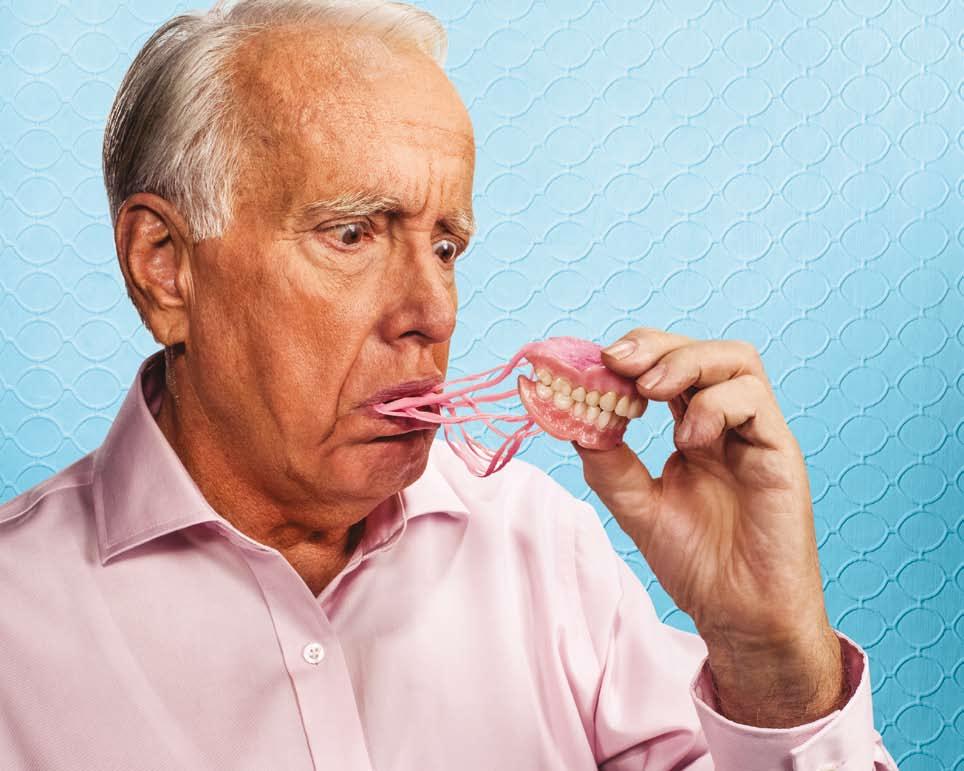










For more information, please visit teethinplace.com InPlace Comprehensive Treatment Options exclusively feature the LOCATOR ® Attachment and other products from ZEST Anchors LLC. Call today for a consultation. Never worry about your loose dentures again. Stop trying to hold your dentures in place with messy adhesives. InPlace™ will allow you to secure your teeth and say “goodbye” to adhesives forever. Visit our dental practice and discover how life-changing and affordable implant-retained overdentures can be. TIRED OF THE GOOEY MESS? There IS a better option. 1469 S. 70th St | West Allis, WI 53214 (414) 383-5833 wisconsinsmiles.com
I love practical advice that you can immediately apply to your life. We sit around desperately trying to find a deeper meaning that will ring true to our psyche. We are conditioned to believe this is as good as it gets at certain times of our lives. And that’s when you go back to the basics and find practical is solid. Dreamful thinking can lead towards a path that might bring us to major let down. So why is life like this? What are the zen masters trying to tell us? Well as my life has recently gone through a major change and about to go through even more, I needed to think. Why? Why is it easy to except good change but harder to except an uncomfortable change? The romantic feeling that breezes by us when things go well are easy. But have you noticed that with pain comes growth? We tend to learn more from pain than happiness. We appreciate the good times but never the bad. Of course we don’t want to go through the rough patches. Without them though, how would we learn? Growth surrounds us at every age. It won’t stop, we will always be learning, always be aging and most important we have the choice to make the most of the good, the bad, and I hate to say even the ugliest times we have faced. Mother’s Day really will hit me the most this year. I have a senior in high school who is flying the nest. You look at the eighteen years you have put in to “train” your little person to become the man he is today and the future man he will become. On a positive note, I know this next chapter will come massive growth for both of us and I welcome it.
MHL started a new paper last month called POSITIVE AGING. I never thought I would have another paper to edit monthly. But with the extra work comes with reward of learning more in this phase of my life. It forces me to retrain my brain with only trying to see the positive side of everything. So for May, I wish everyone growth. EMBRACE LIFE. AGE WELL. AND KEEP READING - Stay Healthy
contributers contact

The Ommani Center, Livestrong.com, Environmental Nutrition, Nutrition Action Health Letter, Columbia/St. Mary’s, Ascension, Eye Care Specialists, Aurora, Alexian, Eye Physician Associates, Brothers Village, Ye Olde Pharmacy, NIH, Jensen Health and Energy, Foot Solutions, Allergy and Asthma Centers, Tudor Oaks, Active Care Rehab, Greensquare Center for the Healing Arts, Midwest Audiology, Integrative Family Wellness Center, Universal Services, American Camp Association and Home Instead
For information on advertising or to submit articles call, 414-659-6705 or 608-237-6000, or email mhl@wi.rr.com.
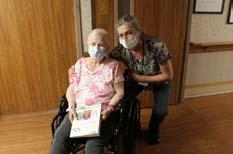
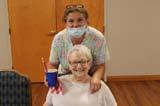
Subscriptions are $20 per year. Thanks for reading MHL.
MHL is published on the first of each month . The articles in this publication are in no way intended to replace the knowledge or diagnosis of your doctor. We advise seeing a physician whenever a health problem arises requiring an expert’s care.
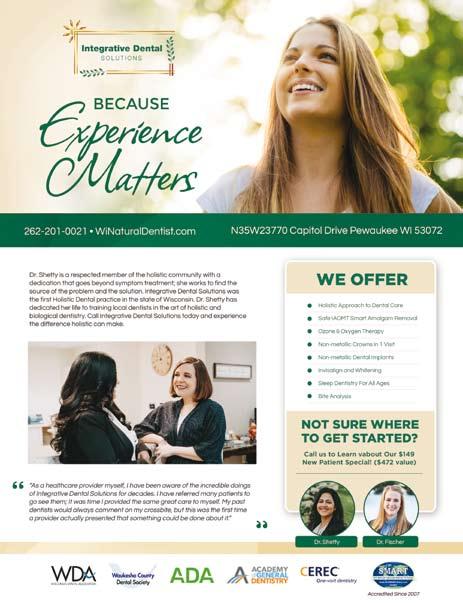
thanks
Special Thanks! To all the local professionals that provide us with articles containing new information and keeping all our readers informed of the latest in healthy living.
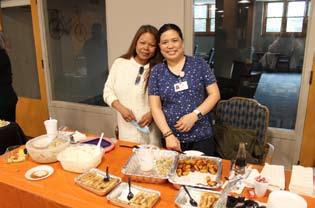
Istock.com
Lewis Media Group | www.modernhealthandliving.com


Lewis
Amanda
Malberry
publishers editor graphic
advertising
Media Group
Lewis
Media Tom Delgado Barry Lewis
design
disclaimer
staff MHL
distribution manager travel editor founder Jerry Kornowski Marlys Metzger Barry Lewis
mAY 2023 EDITION May 2023 MHL 3
Note MAY 2023 Grow your career with VMP! - Infection Preventionist - Registered Nurse - Licensed Practical Nurse - Certified Nursing Assistant - Respiratory Therapist - Physical Therapist - Resident Assistant Visit www.vmpcares.com/careers for more information or scan the QR code to apply with us today! WE ARE HIRING! To learn more about our community call (414) 607-4100 or visit us online!
STAFF images
123RF.com,
Amanda Lewis
Editor’s
Est 1992
HLMMODERN HEALTH AND LIVING MAY 2023 FREE PUBLICATION
A GUIDE TO HEALTHY LIVING FOR MEN, WOMEN, CHILDREN AND SENIORS Senior Lifestyles How to Create the Perfect Outdoor Living Room Seeing Clearly During Allergy Season Migraine Steps That Make a Di�erence How Often Should You Change Up Your Workout Routine? Healthy Spring Recipes

Join our team of holistic health practitioners



We are looking for strategic thinkers, team players and leaders who align with our purpose of improving the health and wellbeing of those we serve
Our work focuses on crea ng meaningful connec ons with each of our clients, helping them to move to ward a healthier lifestyle. We assist each individual’s journey by helping to uncover root causes of their health concerns through holis c natural health and wellness advocacy

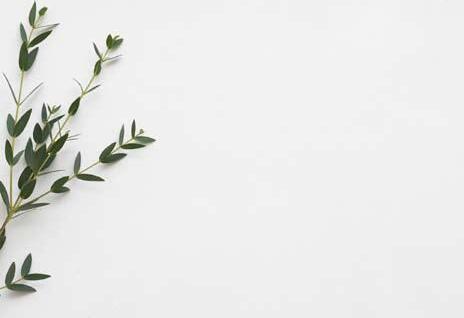
If our purpose resonates with you, we invite you to explore career opportuni es and apply today.
*Full me or part me (at least three days a week as client load builds). $35/hr, up to $40hr maximum. Qualifica ons: Must have a passion for natural health. Background in Nutri on preferred Willing to train the right candidate

MENOMONEE FALLS AND NEW BERLIN
UNDERSTAND THAT HEALTH
PERSONAL SEE WEBSITE TOTALHEALTHINC.COM FOR MORE INFORMATION CLINIC@TOTALHEALTHINC.COM Send re sume to: Health Employment May 2023 MHL �
WHO
IS

Migraine Suffers at Work Action Steps That Make a Difference!
By Gable Holderness, MSN, APNP
Mi igraines can be a debilitating condition affecting millions worldwide. People that suffer from migraine are affected not only at home but in their work environments as well.
Due to restrictions at work or lack of understanding of this debilitating disease, migraines often cause significant problems in the workplace. Fortunately, there are a number of interventions that can help reduce the frequency and severity of migraines, allowing sufferers to remain productive and successfully perform their job roles.
Implementing a Flexible Work Schedule:
One of the most effective interventions for migraines in the workplace is a

flexible work schedule. By allowing employees to adjust their hours and work from home, you can reduce stress and minimize the triggers that can lead to migraines. This is especially important for those people who suffer from light or noise sensitivity, as they may find it difficult to work in a brightly lit or noisy office.
Adjusting Light:
When working from the office is the only option, adjusting the lighting may help those migraine suffers whom are photosensitive. Dimming, or better yet, removing fluorescent lights while bringing in more natural light is key. If adjusting the light over their work space isn’t possible, consider light filtering glasses to dim light without affecting neighboring employees.
Offer Ergonomic Equipment and Supplies:
Providing ergonomic equipment and supplies, such as adjustable chairs and standing desks, can also help reduce the frequency and severity of migraines. Adjusting computer screen height so that the top line is at eye level is a relatively easy and inexpensive intervention. Ergonomic equipment can help to reduce stress on the neck, back, shoulders, and improve posture, all of which can help prevent a headache before it even starts.
Encourage Physical Activity:

Physical activity is an important intervention for migraines, as it can help reduce stress and improve circulation. Encouraging employees to take regular breaks for physical activity, such as stretching or walking, can help prevent headaches and reduce symptoms. For an added bonus – walk outside to get fresh air and take in some vitamin D!
While migraines are debilitating to the individual, they in turn can also disrupt productivity in the workplace. However, by implementing flexible work schedules, adjusting lighting, providing education and resources, offering ergonomic equipment and supplies, and encouraging physical activity – employers can help support employees with migraine. By taking these actions along with offering compassion, employers can minimize the impact this condition has on the workplace.
Mind+ Neurology, a specialized headache and migraine clinic, offers walk-in Urgent Care for immediate rescue from severe migraine attacks. The newly built clinic is located at 12200 Corporate Parkway, Suite 400, Mequon, WI 53092. As an independent practice, no referral is needed. Mind+ Neurology is accepting new patients. Go to mindplusclinic.com to schedule an appointment today!
May 2023 MHL �
REAL HEALTH & FITNESS W61 N513 Washington Avenue Cedarburg, WI 53012
Migraine
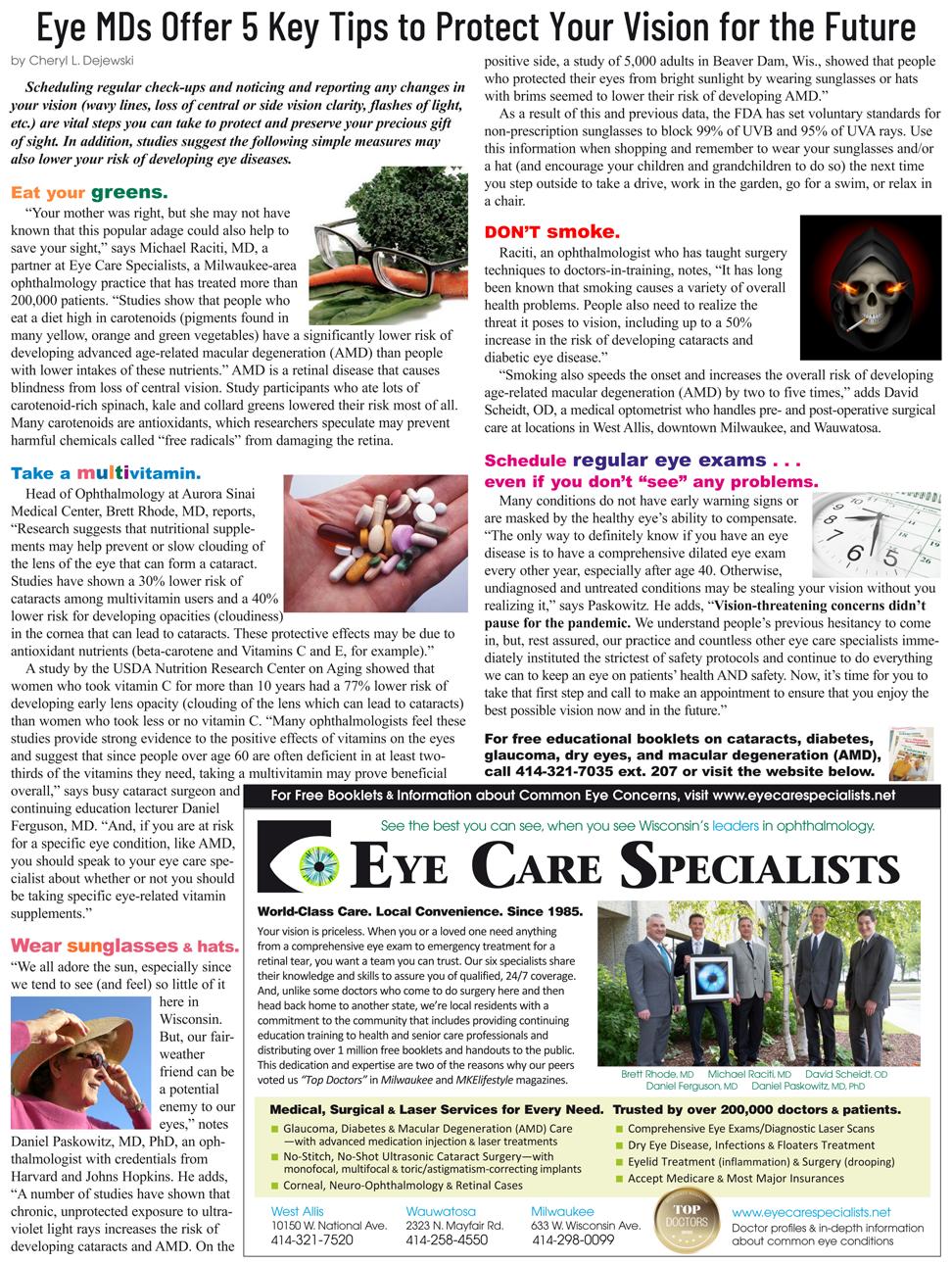
Eye MDs offer:
Tips for seeing clearly during allergy season
 By Cheryl L. Dejewski
By Cheryl L. Dejewski

Spring is finally here. And, as winter loosens its grip upon us, it’s time to get out and enjoy the simple joys of Wisconsin’s muchtoo-short outdoor activities season. For many people, however, a stroll through the park or an afternoon in the garden brings tears to their eyes. Why the unhappiness? Allergy sufferers often face a host of problems that affect their vision. This overview may help to explain and alleviate some of the problems caused by eye allergies.
What are the symptoms of eye allergies?
“Symptoms typically include watery or itchy eyes, mucous build-up, difficulty focusing, discomfort wearing contact lenses, as well as other setbacks. Fortunately, these symptoms are usually easy to treat,” says David Scheidt, OD, past president of the Milwaukee Optometric Society.

How do eye allergies occur?
“For some people, certain particles in the air (like pollen, animal hairs, dust, or
molds) can cause specific eye cells to release allergy activators such as histamine. These activators then create symptoms of irritation. Many people with eye allergies have a history of hay fever or other allergic problems. An allergist can test to find the cause of your allergies,” says eye surgeon and ophthalmologist Michael Raciti, MD. His partner at Eye Care Specialists, Daniel Paskowitz, MD, PhD, adds, “Often, you can find the cause yourself with a little detective work. For example, if you get red, itchy eyes every spring, it’s probably due to pollen. Or, perhaps you notice a connection to coming into contact with dust, mold or pets.”
What is contact dermatitis?
“Contact dermatitis is an inflammation that occurs when a substance that is an irritant or causes an allergic reaction comes in contact with the skin. The inflammation can occur in one area and spread to others. Common causes of contact dermatitis from irritants are soaps, detergents, bleach, solvents, waxes, polishes, hand cleaners and medications. Common causes of contact dermatitis from allergic reactions are cosmetics, hair dyes, jewelry, fingernail polish and deodorants. Other known causes are rubber, nickel and poison ivy,” says Daniel Ferguson, MD, an ophthalmologist who also performs corneal procedures.
Brett Rhode, MD, an eye surgeon who also treats infections and allergic reactions, explains, “Contact dermatitis that affects the eyes causes itching, redness and skin scales around the eyes. The most common cause of ocular (eye) contact dermatitis is a reaction to contact lens solutions and eye drops. Discontinuing the drops and applying cold compresses usually results in prompt improvement.”
How are eye allergies & contact dermatitis treated? The right treatment or combination of treatments depends on the severity of your symptoms. Eye Care Specialists’ doctors offer the following options for treatment:
• If you discover what’s causing your allergy, the best treatment is to avoid it, if possible.
• When working in the yard, wear gardening gloves and keep your hands away from your eyes.
• If you are allergic to animals, keep your hands away from your eyes after petting them or, better yet, avoid any contact if at all possible.
• Buy hypoallergenic cosmetics—especially when selecting mascara and eye shadow.
• Wear rubber gloves when washing dishes or working with solvents and chemicals.
Vision Vision>>page 47 May 2023 MHL �
Whole-Body Wellness: Why You Need More Than Just a Fitness Consultant
When it comes to fitness, a one-size-fits-all approach won’t cut it! Achieving and sustaining higher levels of physical strength requires more than just a fitness consultant and a little mental fortitude…
A holistic program, on the other hand, supports your whole system through the process of transformation—mind, body, and spirit! In addition to offering the perfect fitness regimen to support your unique body and lifestyle, it can help you:
Provide your body with the best fuel possible according to your preferences
Stay stress-free, accountable, and free from the chains of previous bad habits
Remain present through the process by making it much more personal and
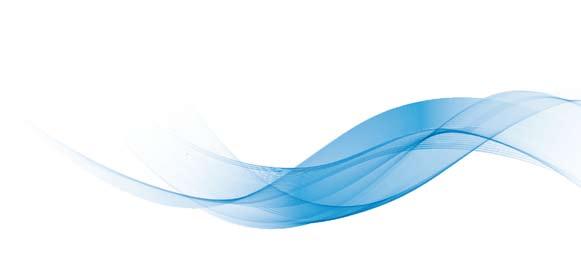
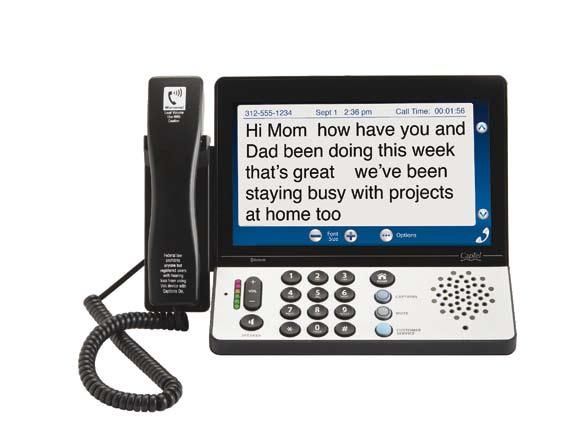
enjoyable
Read on to learn more about how a holistic approach to health can transform your body and life for the better!Support Your Body
The human body is an amazing machine that is constantly working to heal itself and maintain balance! In order for it to function at its best, it needs the right fuel and a sustainable routine to support it through its processes.
Fuel Your Machine
When it comes to health, fitness is just one part of the equation. Nutrition is just as important, if not more so! A good holistic program will help you fuel your machine for maximum efficiency—and enjoyment!
Curate a nutrition plan based on your unique body composition and preferences to maximize both your muscle gain and motivation.
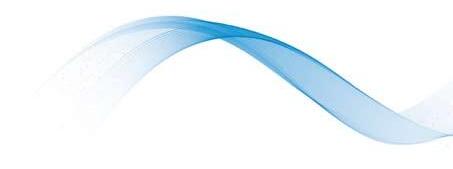
Offer healthier ways to enjoy your favorite foods so you can fuel your brain and bod in the most delicious way possible.
Make Sustainable Changes
Can’t seem to stick to a rigid workout routine? A stand-alone fitness consultant might ask you to do something that is too far from your comfort zone. A holistic program, on the other hand, can provide you with a regimen based on your current lifestyle so you can make long-term changes.
Control Your Mind
The mind is a powerful tool— While it can certainly help you achieve your fitness goals, it can also be your worst enemy at times! A holistic program takes the stress away so you can banish bad habits and stay accountable.
Reduce Cortisol
One of the best ways to control your mind and muster motivation is to reduce the cortisol running through your veins. High levels of this hormone can even lead to weight gain, anxiety, and other health problems. A holistic program helps you reduce your stress levels so your mind and body can both hop on board and thrive!
Banish
Bad Habits
While a coach that solely focuses on fitness surely has some tips to impart on how to improve your form and break bad habits, a holistic program will go one step further and help you find ways to banish them for good! Some will even provide accountability apps and other tools to track your behaviors so you don’t
Wellness>>page 39

Wellness Planning 10 MHL May 2023 The CapTel® Captioned Telephone shows word-for-word captions of everything a caller says, letting you read anything you cannot hear over the phone. CapTel is a NO-COST, federally funded technology available under the Americans with Disabilities Act To qualify, users need: • Hearing loss • Internet connection • Landline telephone service FEDERAL LAW PROHIBITS ANYONE BUT REGISTERED USERS WITH HEARING LOSS FROM USING INTERNET PROTOCOL (IP) CAPTIONED TELEPHONES WITH THE CAPTIONS TURNED ON. Advanced speech recognition software is used to process calls, and, in certain circumstances, a live communications assistant may be included on the call. There is a cost for each minute of captions generated, paid from a federally administered fund. No cost is passed on to the CapTel user for using the service. CapTel captioning service is intended exclusively for individuals with hearing loss. CapTel® is a registered trademark of Ultratec, Inc. The Bluetooth® word mark and logos are registered trademarks owned by Bluetooth SIG, Inc. and any use of such marks by Ultratec, Inc. is under license. (v1.7 01-23) Can’t Hear on the Phone? Get a NO-COST CapTel Captioned Telephone Several phones to choose fromfor landlines, Internet phone, or mobile 800-233-9130 CapTel.com
Vintage Festivals Coming to Road America
Road America
The 2023 season kicks off this spring. Located in Wisconsin’s scenic Kettle Moraine, Elkhart Lakes’s Road America Inc. is one of the world’s fastest racing tracks. Road America has fun events coming up for all ages. Get to the track!

SVRA Vintage Festival Weekend a SpeedTour Event
May 19-21, 2023
Racing’s glorious past comes to life May 19-21, 2023, as the SVRA Vintage Festival Weekend returns to Road America. The 2023 season kick-off event will showcase all the sights and sounds from motorsport’s pioneering age to modernera racecars.
The event features a packed schedule. Races will feature cars spanning several decades — many of the entries having previously competed at Le Mans and the Indy 500.


SVRA (Sportscar Vintage Racing Association) SpeedTour events offer tightly regulated, wheel-to-wheel racing with a lineup that includes race groups for all SVRA classes. Classes include Formula 5000, Formula Ford, sports racing, and production sports cars from marques such as Lotus, Alfa Romeo, Jaguar, Porsche, and Corvette from the ’50s, ’60s, and ’70s.
MotoAmerica Superbikes & Vintage MotoFest
JUNE 2-4, 2023
MotoAmerica Superbikes races are returning to America’s National Park of Speed on June 2-4, 2023. Enjoy qualifying on Friday and all-day racing Saturday & Sunday! Seven classes of road racing – Medallia Superbikes, Supersport, Stock 1000, Junior Cup, Mission King of the Baggers, Royal Enfield Women’s Build.Train.Race, & Mission Mini Cup. Meet the riders in our open race paddock! Camping, VIP, and Fan Lap packages available. Saturday features Vintage MotoFest which includes a ride-in bike show and competition, craft beer tasting, live bands, and stunt shows. Children 16 years old and younger receive free general admission at the gate with a paying adult Get up-to-speed on all MotoAmerica classes HERE!

Vintage MotoFest
A highlight of the MotoAmerica Superbike weekend is Road America’s Vintage MotoFest on Saturday, June 3. Regarded as the premier Wisconsin ride-in vintage motorcycle show and party featuring an eclectic mix of Euro, Japanese and American vintage motorcycles. All makes and models are welcome! Enter your motorcycle upon arrival Saturday morning between 9-11 a.m.
Bike Show Classes:
Café Racer
Rat Bike
Scooter

Chopper
Race/Sport Bike
Military Bike Stock/Restored
Fan’s Choice
Judge’s Choice
In addition to the ride-in-show and competition, enjoy stunt shows, premium motorcycle vendors from throughout the country and live music.
New this season is the opportunity to upgrade admission tickets to include access to the VIP Tower suites. The VIP Tower is located right at the Start/Finish line on the front straight across from the Main Paddock. Suites are furnished, climate-controlled, staffed with an attendant, and have restrooms conveniently located on the same floor. Two high-definition screens feature timing and scoring and a live feed of the races. Learn more about this event and what all the upgrades includes at www.ROADAMERICA.COM.
YOUTH AGES 16 & UNDER ENTER FREE WITH PAYING ADULT Elkhart Lake, WI 800-365-7223 RoadAmerica.com FAST, FAMILY FUN AT AMERICA'S NATIONAL PARK OF SPEED! Bring the entire family out to Elkhart Lake's Road America for racing, camping, go-karting and to enjoy the Bank First Family Fun Zone. Official Vehicle of Road America ON-SITE CAMPING • PARKING • CONCESSIONS
May 2023 MHL 11
Spring Events
How to Create the Perfect Outdoor Living (and Work) Room

It’s time for pandemic-weary homeowners to ready yards and landscapes for backyarding. Yes, backyarding is a word – and one that we all need right now.
The pandemic thrust us into a new reality, and the backyard has a starring role. With a year of limitations on where we go, how we gather, and who we connect with, yards and other managed landscapes became a safe haven.
Backyarding became a way of life as lawns, gardens, patios and decks evolved into outdoor offices, classrooms, family gathering places, and the new ‘hot spots’ in our neighborhoods. So how is the backyard set up to meet all of these needs?
Create activity zones. Consider what needs to happen in the backyard and map activity areas. A shady table can double as a home office, study zone, art table,
or dining spot. A hammock or outdoor sofa can suffice for napping, reading or studying. A patch of sturdy grass is perfect for sports, family games and play. A fire pit offers cozy chairs for star gazing and socializing, while a grill near a seating area promises delicious meals. A wall, fence, or pergola may hold an outdoor movie screen for nighttime viewing. An herb or vegetable garden helps kids learn about science and nutrition while reaping the satisfaction of growing food for the table.
Factor functionality with purpose. Is there a quiet spot for conference calls? Or a shady spot that minimizes glare for online video meetings? Note where electrical outlets are and if an outdoor-rated extension cord will be needed to accommodate all of the electronics that may be used outside. Check wifi coverage and cell service in the yard and determine if there is enough comfortable seating.
Spruce up existing landscaping. Assess the backyard and do some basic “clean up.” Fix bare patches in the grass. Use a leaf blower to clean out flower beds. Prune bushes and trees. Cut the grass to a healthy height. Add a fresh layer of mulch around your trees and in flower beds. Freshen up by weeding, planting flower beds, and filling pots with colorful flowers and verdant plants.

Use plants and shrubs to hide unsightly items and control noise. Trees, shrubs and bushes offer cover from neighbors, deliver shade, camouflage unsightly pool equipment and air handlers, and tamp down noise. Planters with flowers between seating and eating areas on a patio add visual interest and privacy. Shrubs and tall plants are a terrific privacy-creator (and noise canceller for those conference calls).
Put the right plant in the right place. Choosing the right plants for the climate zone and for your lifestyle will create a backyarding space that is attractive. It will also be easier to maintain, and support pollinators and wildlife. Consider watering and sunlight or shade needs for any plants added. A hardy grass variety is more likely to hold up to pets and kids. Save delicate flowering plants for patio containers, and be sure to check out the ASPCA list of toxic plants to keep pets safe.
Invite the outdoors in. Blending interior and outdoor living spaces helps the backyard feel like an extension of the home. Open blinds and curtains to the yard. Use complementary indoor and outdoor décor in similar colors, materials and styles to create a cohesive space. This enables everyone to transition seamlessly from indoor life to outdoor living.
Backyarding
Decluttering: An Important Step to Senior Safety

For many of us, clutter is one of life’s little annoyances that we can’t seem to shake, no matter how old we get. It may not be as frightening as death or taxes, but it is just as certain, and – unless you’re one of the very disciplined, very organized few – just as looming.
For seniors, however, it can be a special challenge. In addition to creating a messy home and making it difficult to find things when they’re needed, clutter can increase your senior’s risk of household accidents, such as trips and falls. It can even be a fire hazard.
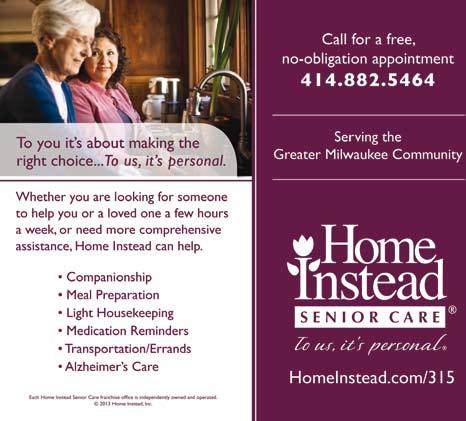
Some of our tried-and-true techniques include:
• Mail and bills
◦ Arrange for your senior to pay their bills online, or offer to do it for them.

◦ Ask that your senior be removed from mailing lists or visit one of these websites to do it for them:

▪ https://www.dmachoice.org/
▪ https://www.catalogchoice.org/
▪ https://www.optoutprescreen. com/?rf=t
• Photos and Mementos
◦ The most efficient way to organize photos is to digitize them. This way your senior can enjoy them on a continual loop in a digital photo frame or screen saver, or they can store them on a DVD. The downside to this is that it can be costly and/or time consuming, and your senior might not trust the technology enough to be comfortable getting rid of the “backup” photos.
◦ Sometimes seniors don’t necessarily want all the photos or their children’s school projects around but feel guilty about getting rid of them. Consider hosting a memory open house, where all the people who have helped your senior make these memories (their children, other relatives, friends) can come by and look through
Declutter<<page 47
May 2023 MHL 13

Color Code Your Mental State to Prevent Burnout and Perform at Your Best
By Katerina Lengold
In our fast-paced, hyper-connected world defined by the pressure to do more than ever before, it’s no wonder that today’s workforce is in the throes of a burnout crisis. It’s this crisis that has, at least in part, led to trends like quiet quitting and the newest rage: Bare Minimum Mondays.
But are quiet quitting and its variations really the solution? Having experienced and recovered from severe burnout myself, my answer is a resounding “no.”
My own burnout journey began when I was just a child. I was born in an area in today’s Kyrgyzstan, near the border of China. I grew up poor, so I vowed to do whatever it took to have a better life—even if it meant making big sacrifices.
I began working at the age of 10, and by 14, I was studying in university. At 16, I owned a business, earning more than my parents. At 19, I got a full scholarship at MIT, and by 23, I sold my space tech startup, having become the youngest exec in the world aerospace industry.
Sounds like a dream? It didn’t feel like one. I was very successful, but completely miserable.
I was 25 when I realized I couldn’t do that any more. I decided to quit my job and study the human brain instead of sending satellites into space. A major goal was to figure out how people can experience both joy AND success. That includes preventing burnout.
One of the many exciting things I discovered is that we have the power to influence what happens in our brain. But to use that power, we need to understand what’s happening. When it comes to burnout, what’s happening is that the brain’s neurons get overexcited. The connections between them go
haywire and our nervous system goes into overdrive. That’s why we wind up with those burnout feelings of being overwhelmed, exhausted and drained.

This is, of course, a very big simplification of a very complex process. But it serves the purpose of helping us understand what’s happening so we can influence it.
To help myself and others do just that, I created a system for color-coding our mental state at any given moment along a scale of minus 10 to plus 10. I call it Neuro Balance. Imagine, for example, that your neurons are so fired up that you’re having trouble controlling your actions and are behaving irrationally, including saying things you will regret later. That state is a plus 10. Plus 2 or plus 3 is an ideal state for getting things done: we’re activated, but in control. At zero, we are in a place of peace, joy and openness. We’re in the present moment, observing and receptive to whatever comes our way.
By paying attention to how we feel, we can gauge what zone of the spectrum we are in, and correlate it with the following 3 color-coded zones:
Red (+4 to +10): Our nervous system is in overdrive. We feel overwhelmed, anxious, and super-sensitive to our surroundings. It’s time to take a step back and breathe.
Blue (-4 to -10): Our nervous system is inhibited. Here, we feel disconnected, numb, and disinterested. We need to find ways to re-engage and energize ourselves.

Green (-3 to +3): This is where we experience mental balance, allowing for clear thinking, focus, effective communication, and motivation. The ultimate goal is to spend at least 80% of our time in the green zone.
The first step to preventing burnout
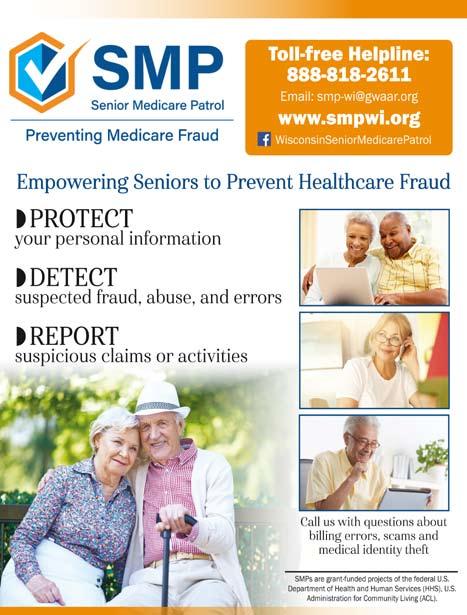

Code>>page 47
mail
including financial your protecti incur supplement and Their $150 Advantage save nearly for the product
to
of do situation,
and Sherry Baggerley Call (262) 523-1440 today. Call (262)844-4752 today. May 2023 MHL 1�
so working insurance and they best term would her similar she representative, care suggestions
current
Mental Health




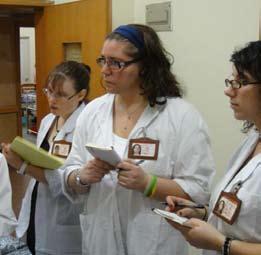





the Well Being
Earn an accredited Master’s Degree in Oriental Medicine wth a Bachelor’s in Nutrition or a Master’s Certification in Acupuncture. Online, Evening and Weekend Classes Available “An Ancient Medicine For Modern Times” 6232 Bankers Road 6232 Bankers Road, Racine, Wisconsin 53403 | 8950 Gross Point Road, Skokie Illinois 60077 Approved by the Illinois Board of Higher Education and the Wisconsin Educational Approval Program. Accredited by the Accreditation Commission for Acupuncture and Oriental Medicine. Become an Acupuncturist in 2 1/2 years *Financial aide available for those who qualify Lifestyle 16 MHL May 2023
Dr.
William Dunbar, President
of
Midwest College
How Often Should You Change Up
Your Workout Routine?
By Heather Mayer Irvine Reviewed by Alyssa Sparacino CPT

In order to avoid hitting an exercise plateau, it’s best to change up some part of your workout routine every few weeks.
It can be hard to get into a workout routine, we know. But once you do, you’ll start to see improvements in your health, and depending on your workout goals, your fitness and athletic performance. That’s the good news. The bad news, perhaps, is if you stick to the same workout, you will experience a plateau.
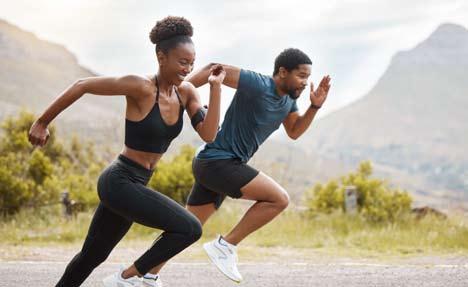

“Variability is crucial,” Yaron Ilan, MD, director of the department of medicine at Hebrew University-Hadassah Medical Center in Israel, tells LIVESTRONG.com. “Looking at sport, if you keep running on a treadmill at the same pace every day for years, there is no variability.”
But how often should you change your workout routine? And what types of changes do you need to make to avoid plateau?
It’ll depend on your goals, but even small changes can be enough to challenge your body, says Kylie Harmon, PhD, CSCS, an assistant professor of exercise science at Syracuse University, who specializes in resistance training.
“Overall, small changes over time can really add up to pronounced adaptations,” Harmon tells LIVESTRONG. com, pointing out that our bodies love homeostasis — balance. “That’s what we’re looking for when we want to see performance improvement.”
How Often Should You Change Your Workout Routine?
In order to keep things fresh and your body challenged, Harmon recommends changing something every
four to six weeks.

“You don’t need to change an entire program every four weeks,” she says, noting that you actually shouldn’t in order to meet your goals. “It depends on the goal, but you can make small changes every week, like adding weight or adding repetitions.”
An example Harmon gives is cookie-cutter strength programs, which generally introduce a new element or modify an existing one every four weeks, including a “deload” wave. A deload period is when you scale back your training to avoid overtraining and give your body a chance to recover.
Dr. Ilan, who authored this February 2022 review in the International Journal of Environmental Research and Public Health, is a little more aggressive in his approach to changing up your workouts and says that technically we should be changing parts of a workout every minute.
“The more you change, the better,” he says. “Every minute on the treadmill, that’s ideal. Every day is also fine. The more you introduce variability, the better.”
Realistically, though, it’s unlikely a runner, for example, will change their pace every minute. And that doesn’t mean that runner won’t get faster or build tolerance to run longer. But, a good way to introduce this constant variability in a single workout could be mid-run surges: For every three minutes of easy running, add a 60-second surge or pickup.
How Should You Change Your Workout Routine to Avoid Plateau?
Weight-lifters are probably familiar with progressive overload, which is a way to help improve your strength. Specifically, it requires you to choose exercises and weights that maximize Change>>page 45
Did self-isolation leave you with new aches and pains? Do you feel physically deconditioned? STOP PUTTING OFF YOUR ACHES AND PAINS! STOP PUTTING OFF YOUR ACHES AND PAINS! Let us help you return to a sense of normalcy Let us help you return to a sense of normalcy and become pain-free! and become pain-free! 136 N. MAIN ST. SUITE 308 THIENSVILLE, WI 53092 (262)-478-0920 Get Better Faster. Get Better Faster. drsofpt.com drsofpt.com May 2023 MHL 1�
Fitness
in your physical and mental state Your Body And Play A Role
In temperate climates, such as here in Wisconsin, you know spring has arrived with the heavy shift in air pressure, the slightly warmer but still mostly cool temperatures, and wet rains with increased humidity. Along with these seasonal environmental changes come the accompanying spring health conditions of colds, flus and seasonal allergies.
From the Ayurvedic perspective, the spring season is dominated by the kapha, one of the three bio-chemical life forces or doshas which exist within your body and in the external world around you. As an individual, although you have all three energies, you will have one or two in larger amounts which creates your constitutional body-type or prakruti. Your constitution can predict which illnesses, conditions and symptoms you are more prone towards as well as which foods and lifestyle factors will keep you healthy.
Because these doshas exist not only within your body system but in everything in the universe, you are affected both by the lifestyle choices you consciously make as well as the weather, climate and stages of life over which you have no control. All these external factors add to the levels of these bio-chemical forces in your body and play a role in physical and mental health.

The life forces or doshas are recognized by their qualities. The general quali-
ties of kapha are heavy, dense, wet or oily, cool and solid or stable which make sense considering kapha is made up of elemental earth and water. If you have an excess of this life-force in your system, it will feel a little like having a wet blanket over you and you may experience…
• Colds or flus with a wet cough, difficulty breathing, excess mucus and sinus pressure
• Lethargy
• Dullness or heaviness in the mind
• Sadness or mild depression
• Stiff muscles
• Swollen joints
• A desire to sleep more
• Sluggish digestion possibly with nausea
If you’re experiencing any of the above symptoms, help your body’s immune system adjust to the changes with an Ayurvedic approach. To balance the excess doshas or life-force, elements made up of the opposite qualities of the imbalanced dosha(s) are used. In the case of Kapha, this generally means bringing in more dry, light, warm, stimulating food and lifestyle activities.
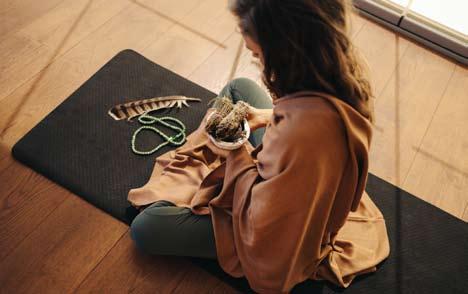
Ayurveda’s treatments are individually tailored according to not only the seasonal needs but also the individual constitution and current state of health. For best results, consult an Ayurvedic Practitioner for a thorough assessment and customized food, lifestyle and herbal program. In the meantime, manage the impact of the kapha-full spring season and help make those chronic seasonal allergies and conditions a thing of the past by incorporating some of the following activities:
• Enjoy dry saunas
• Get moving by exercising regularly.
• Get out of your ruts by challenging your mind with new activities and engaging in new relationships to expand yourself emotionally.
• Receive a deep massage
• Try not to sleep past 6 am and avoid daytime napping
• Minimize heavy, oily, sweet foods such as meat, dairy, wheat products and sugar
• Eat drying grains like barley, corn, buckwheat, millet, and dry cereals and granola
• Eat more light, warming foods such as soups with vegetables, beans and whole grains flavored with moderately warm spices and less salt
18 MHL May 2023
Ayurveda
Recipes
Seasonally-inspired Healthy Spring Recipes
Awaken your taste buds with these fresh and wholesome dishes using seasonal produce.

One of the healthy spring recipes on our list is a strawberry spinach salad. Choosing recipes inspired by the seasons means you get to mix it up and enjoy fresh and creative food throughout the year. You may have enjoyed soups and savory dishes throughout the winter, but as the weather warms, you might start to crave lighter, fresher plates that make you feel invigorated for springtime fun. These delicious and healthy spring recipes each emphasize bright, crisp vegetables that are loaded with flavor and good-for-you benefits:
Strawberry Spinach Salad

Enjoy double antioxidant power with this strawberry spinach salad recipe! Spinach is good for eye health, cancer prevention, and more, while strawberries help your heart and regulate blood sugar. The poppyseed dressing adds another dimension of delicious flavor to the recipe. If you like the mix of fruit and leafy greens in this salad, you can try watermelon-avocado-kale next.
Ingredients
2 tbsp.fresh lemon juice
1/2 tsp.Dijon mustard
1/4 c.extra-virgin olive oil
Kosher salt
Freshly ground black pepper
5 c.packed baby spinach (5 oz.)
2 chicken breasts, cut into 1/2” pieces
2 c.thinly sliced strawberries
handful of pine nuts
1/4 small red onion, thinly sliced
5 oz.feta, crumbled
Directions
Step 1- In a large bowl, whisk the lemon juice with the mustard. While whisking, slowly pour in the oil until the dressing is combined. Season with salt and pepper.
Step 2 - Add spinach, chicken, strawberries, ½ cup pecans, and onion to the bowl with the dressing and toss to combine.
Step 3 - Pile salad onto plates and top with the remaining pecans and a generous crumbling of feta.
Pineapple and Black Bean Fajitas
Sweet meets savory in this healthy seasonal dinner that’s perfect for eating on the patio on a beautiful spring evening. Pineapple offers a lot more than a mouthwatering burst of citrus: it’s also disease-fighting and anti-inflammatory. Black beans add healthy fiber while helping to lower your cholesterol. Feel free to add chicken or other lean meat for an added boost of protein. Using a whole-wheat or spinach tortilla can deliver additional wholesome whole grains to your diet.
Ingredients
butter
1 tablespoon olive oil
8 scallions, chopped
8 green onions, chopped minced 5 garlic cloves, shread 1 lb boneless skinless chicken breast
cubed fresh pineapple
1⁄4 cup black bean sauce
May 2023 MHL 1�
Sandwich Bored? Sandwich Bored? Visit the Co-op and get out of your rut! 4 stores in Metro Milwaukee 24 hour online shopping www.outpost.coop for info made-to-order or grab & go
44
Recipes>>page
May is lupus awareness month, a time when the Lupus Foundation of America, Wisconsin Chapter, as well as the national foundation and its Chapter Network, escalates its efforts to bring understanding to this mysterious and cruel disease. With awareness comes advocacy, research, education, and support – all necessary components to deeper understanding and, ultimately, a cure for lupus.
This year, Wisconsin Governor Tony Evers signed a proclamation designating May as Lupus Awareness Month in Wisconsin, and Milwaukee Mayor Cavalier Johnson has proclaimed Wednesday, May 10 as Put On Purple Day as part of a worldwide effort to make lupus visible by wearing purple that day and telling people why you’re doing it.
LFA, WI Chapter’s flagship event, the Walk to End Lupus Now – Milwaukee, returns to beautiful Hoyt Park in Wauwatosa on Saturday, May 13. Registration opens at 8am, and the Walk begins at 10. Get there early for family-friendly activities including a WERQ fitness warm-up, Wauwatosa Fire Department safety demonstration, activities and photos with mascots and characters, face painting, and a decoration station where you can get creative and show support for the lupus warriors in your life.

Information about all of LFA, WI Chapter’s programming can be found on our website at lupuswi.org.

Our Lupus Lectureship brings top lupus researchers to Froedtert and the Medical College of Wisconsin and University of Wisconsin School of Medicine & Public Health in Madison, keeping lupus in the curriculum at Wisconsin’s premier medical schools. On Thursday, May 18, LFA, WI Chapter will be the spotlight non-profit at that evening’s Milwaukee Milkmen baseball game, raising funds and awareness of lupus at The Rock’s Franklin Field. Visit lupuswi. org for tickets.
Someone you know has lupus, a chronic autoimmune disease with no single cause and no cure. While some symptoms of lupus are visible – skin rashes, hair loss, swelling caused by steroids used for treatment – many are not. People with lupus suffer from chronic pain, chronic fatigue, joint pain, confusion, organ damage, and sensitivity to UV light because their immune systems attack their own tissue. For many, lupus is an “invisible disease;” their bodies are fighting a daily battle but on the outside, they don’t “look sick.”
It is for this reason that awareness is of critical importance for lupus advocates. Despite an estimated five million people worldwide – nearly 30,000 in Wisconsin alone – who suffer from its devastating effects, many people have never heard of lupus, and even more have no idea what it is.
The saying “someone you know has lupus” is often true, whether you are aware of it or not. Support the lupus warriors in your life by participating in these lupus awareness month activities. It is only through awareness that we can better understand, and more effectively fight, the mysterious and devastating disease known as lupus.

20 MHL May 2023
May is Lupus Awareness Month
awareness is of critical importance for lupus advocates.
What Is Slow Design What Makes It Green?

Slow design is a design philosophy that emphasizes quality, longevity and sustainability.
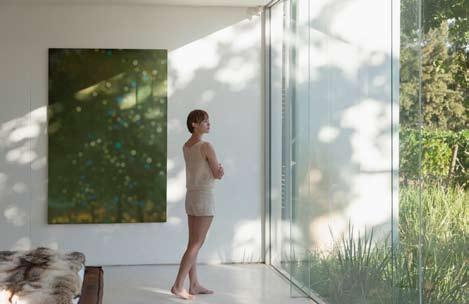
 By Roddy Scheer and Doug Moss
By Roddy Scheer and Doug Moss

The goal of slow design is counteracting the fast-paced disposable nature of our culture by prioritizing thoughtful, intentional design.
Slow design is a design philosophy that emphasizes quality, longevity and sustainability. It seeks to counteract the fast-paced, disposable nature of contemporary culture by prioritizing thoughtful, intentional design over mass-produced, trend-driven products. It is about creating objects that are functional and beautiful, and that are crafted with care, using materials that are responsibly sourced and manufactured.
At its core, slow design is about taking a more holistic approach to design. It’s about considering the entire life cycle of a product, from the materials used to make it to how it will be used and disposed of at the end of its life. Look for pieces that are created with sustainably harvested wood certified by the Forest Stewardship Council as well as “Cradle-to-Cradle” certification awarded to products produced in eco-friendly ways and that can be recycled after use. Slow design seeks to create products that are not just aesthetically pleasing, but that are also sustainable, durable and socially responsible.
One of the key principles of slow design is the idea of “localism.” This means designing products that are made in the same community where they will be used, using materials that are sourced locally whenever possible. By doing this, designers can reduce the carbon footprint of their products, support local economies, and create stronger connections between people and the things they own.
Another important principle of slow design is the concept of “timelessness.” Rather than creating products that are trendy or fashionable, slow design focuses on creating products that are classic and enduring. By doing this, designers can help reduce the amount of waste produced by the fashion and design industries, which are notorious for creating products that are quickly discarded and replaced. One example is what’s been dubbed the “brown furniture revival,” that being wood furnishings that were popular in days gone by but that are seeing a resurgence today due to their timeliness and sturdy quality.
Slow design also emphasizes the importance of craftsmanship and traditional skills. By working with skilled artisans and craftspeople, designers can create products that are not only beautiful and well-made, but that also support traditional forms of production and preserve cultural heritage.
Letting your home grow with you is another key to slow design. “There are those who move into a new place, furnish it in a couple weeks, and are happy to be done decorating,” say Apartment Therapy’s Katie Holdefehr. “Then there are those who see their home as an ongoing project without a specific end date.”
“By not rushing through the process, you can build a home that reflects your life, rather than passing trends,” she adds. “Part of embracing a slower pace is being okay with things that are unfinished.” As such, leave some room and blank wall space for pieces you discover in the future. “If we give ourselves permission to slow down, we may find that home isn’t a static place, but it changes along with us,” concludes Holdefehr.
In short, slow design emphasizes sustainability, durability, and quality over speed and disposability. By creating products that are thoughtfully designed, responsibly sourced, and made to last, slow design seeks to promote a more sustainable and ethical approach to design and consumption.
May 2023 MHL 21
Green Home
Why Do I Have This Noise In My Ears?
Although we hear tinnitus in our ears, its source is really in the networks of brain cells (what scientists call neural circuits) that make sense of the sounds our ears hear. A way to think about tinnitus is that it often begins in the ear, but it continues in the brain.
Scientists still haven’t agreed upon what happens in the brain to create the illusion of sound when there is none. Some think that tinnitus is similar to chronic pain syndrome, in which the pain persists even after a wound or broken bone has healed.

Tinnitus could be the result of the brain’s neural circuits trying to adapt to the loss of sensory hair cells by turning up the sensitivity to sound. This would explain why some people with tinnitus are oversensitive to loud noise.
Tinnitus also could be the result of neural circuits thrown out of balance when damage in the inner ear changes signaling activity in the auditory cortex, the part of the brain that processes sound. Or it could be the result of abnormal interactions between neural circuits. The neural circuits involved in hearing aren’t solely dedicated to processing sound. They also communicate with other parts of the brain, such as the limbic region, which regulates mood and emotion.
What should I do if I have tinnitus?
The first thing is to see your primary care doctor, who will check if anything,

such as ear wax, is blocking the ear canal. Your doctor will ask you about your current health, medical conditions, and medications to find out if an underlying condition is causing your tinnitus.
If your doctor cannot find any medical condition responsible for your tinnitus, you may be referred to an otolaryngologist (commonly called an ear, nose, and throat doctor, or an ENT). The ENT will physically examine your head, neck, and ears and test your hearing to determine whether you have any hearing loss along with the tinnitus. You might also be referred to an audiologist who can also measure your hearing and evaluate your tinnitus.
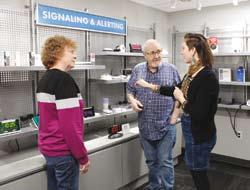

What if the sounds in my ear do not go away?
Some people find their tinnitus doesn’t go away or it gets worse. In some cases it may become so severe that you find it difficult to hear, concentrate, or even sleep. Your doctor will work with you to help find ways to reduce the severity of the noise and its impact on your life.
Are there treatments that can help me?
Tinnitus does not have a cure yet, but treatments that help many people cope better with the condition are available. Most doctors will offer a combination of the treatments below, depending on the severity of your tinnitus and the areas of your life it affects the most.
Hearing aids often are helpful for people who have hearing loss along with tinnitus. Using a hearing aid adjusted to carefully control outside sound levels may make it easier for you to hear. The better you hear, the less you may notice your tinnitus. Read the NIDCD fact sheet Hearing Aids for more information.
Counseling helps you learn how to live with your tinnitus. Most counseling programs have an educational component to help you understand what goes on in the brain to cause tinnitus. Some counseling programs also will help you change the way you think about and react to your tinnitus. You might learn some things to do on your own to make the noise less noticeable, to help you relax during the day, or to fall asleep at night.
Wearable sound generators are small electronic devices that fit in the ear and use a soft, pleasant sound to help mask the tinnitus. Some people want the masking sound to totally cover up their tinnitus, but most prefer a masking level that is just a bit louder than their tinnitus. The masking sound can be a soft “shhhhhhhhhhh,” random tones, or music.
Tabletop sound generators are used as an aid for relaxation or sleep. Placed near your bed, you can program a generator to play pleasant sounds such as waves, waterfalls, rain, or the sounds of a summer night. If your tinnitus is mild, this might be all you need to help you fall asleep.
22 MHL May 2023 Audiology on Wheels? That’s Right! HEAR Wisconsin’s new Moblie Audiology Clinic is hitting the road in Wisconsin communities! Learn more at www.hearwi.org Are you in need of new assistive technology, such as an iPad, smart phone (iPhone or Samsung), and want to learn how you can purchase them at a reduced cost with the TEPP Voucher? Visit our state-of-the-art, beautifully renovated Assistive Technology Center and meet at no charge with technology experts to determine your needs for the latest assistive devices. Appointment is preferred. Walk-ins Welcome! Call or visit us today or get more information at hearwi.org We are conveniently located on 102nd and National Ave. Address: 10243 W. National Avenue, West Allis, WI 53227 Phone: 414-604-2200 Email: info@hearwi.org
May is National Hearing Month
Natural Eco-friendly Burial
Natural burial is dignified, eco-friendly, and minimizes the carbon footprint.
Overview of Natural Burial
Natural burial, or green burial, is the interment of an unembalmed body in an earthen grave. It is a burial practice that has been used for millennia and has seen added interest since the 1990s. Natural burial is dignified, eco-friendly, and minimizes the carbon footprint. Prairie Home Cemetery has a Section (12) devoted to Natural Burial in a Prairie setting.
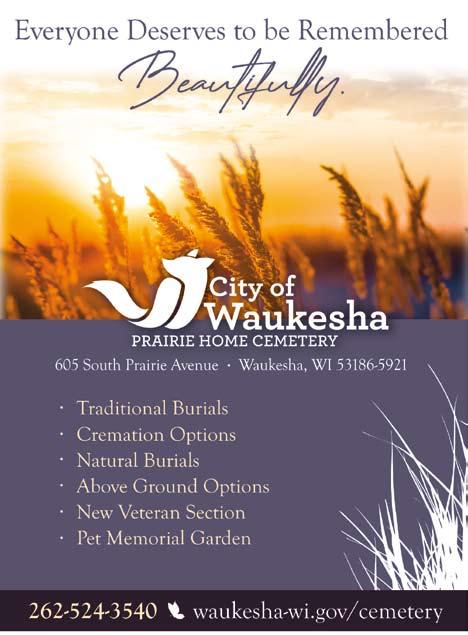
It is not unusual to see wildlife in the prairie. The prairie is a magnet for birds of all kinds and butterflies. In the summer you will notice bird watchers, walkers and people who sit and reflect in this beautiful area.
Please visit but do not remove any seeds or flowers, it is strictly prohibited.
Body Preparation

With natural burial, there normally is no traditional embalming, and the body is wrapped in a burial shroud that is then interred. It may also be placed, either shrouded or unshrouded in a fully biodegradable casket. However with green friendly embalming
techniques, families may opt to have a service followed by burial. Please note burial normally takes place within 2448 hours of death.
Caskets
Caskets often times used are of a wicker, sea grass, or wood (or similar solid material) construction, with no metal. No burial vault is used (concrete or other nondegradable permanent device).
Committal Area
The new committal area has a dual purpose:
To serve as a place where families and clergy can hold funeral services

To serve as a place where memorialization of those buried will occur
Cenotaphs
Cenotaphs (large monuments) will be located within this area and hold the names of those individuals that are buried in the prairie. On December 3, 1849, Nathaniel Walton sold three acres of land to Waukesha township. This was the beginning of Prairie Home Cemetery. For more information contact 262.524-3540.
Butterflies and flowers were made for each other, and there are certain flowers that butterflies absolutely love to be around. As a French poet once pointed out, “Butterflies are flying flowers, and flowers are tethered butterflies.” Here are some of the best plants that attract butterflies!
In attracting butterflies to your garden, it’s important to understand what they want most out of life: nectar. The ancients, who believed that nectar fell directly from heaven, named it after the wines of the gods.
Plants That Attract Butterflies

Native plant varieties are best; some butterflies can only pair with natives. For caterpillars, consider plants like milkweed, dill, and asters. Monarch caterpillars ONLY eat milkweed. In fact, the monarch butterfly is also known as the “milkweed butterfly.”
For butterflies, Joe-Pye weed, ironweed, coneflowers, goldenrod, and brightly-hued asters are nectar-filled favorites.
*Butterfly bush is categorized as an invasive plant in many states and is not used as host plant for caterpillars.
May 2023 MHL 23 www.ModernHealthandLiving.com
Lifestyles MODERN HEALTH AND LIVING Senior

www.missioncreekofeden.com
WHO WE ARE
WHO WE ARE
Mission Creek is the best local assisted living and memory care for you, your family, friends, and loved ones. We work hard to keep our residents and this community great.
Mission Creek is the best local assisted living and memory care for you, your family, friends, and loved ones. We work hard to keep our residents and this community great.
WHAT WE DO
WHAT WE DO
We work directly with our residents and their families to keep everyone involved with their interest and pursuits. Your community remains at the center of life, alongside top-of-the-line care for a comfortable and fulfilling lifestyle.
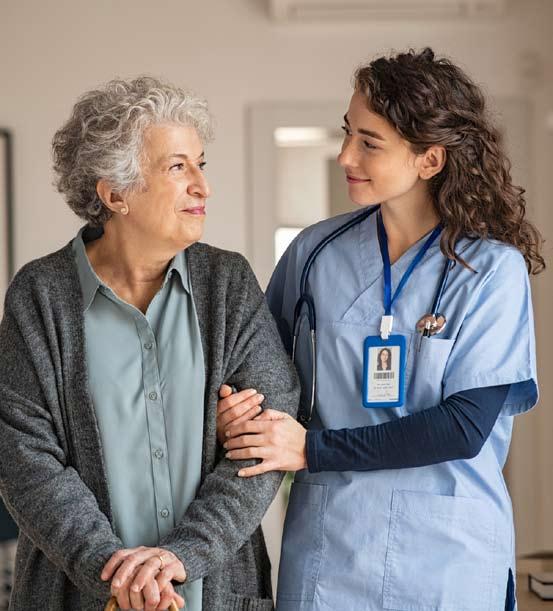

We work directly with our residents and their families to keep everyone involved with their interests and pursuits. Your community remains at the center of life, alongside top-of-the-line care for a comfortable and fulfilling lifestyle.
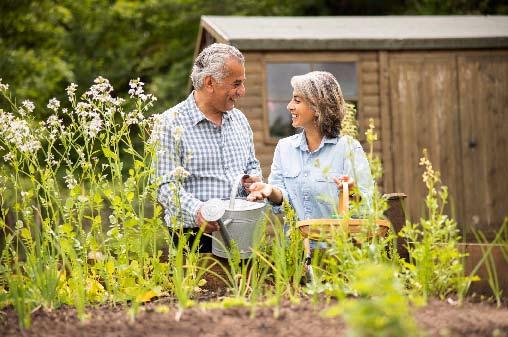
VISIT SENIORLIFESTYLE.COM OR CALL 262-896-8888 TO LEARN MORE.
CREEK
MISSION
Creek 3217 Fiddlers Creek Dr, Waukesha, WI 53188 (262) 832-1020
Mission
A POSITIVE GUIDE TO THE NEXT PHASE OF LIFE 24 MHL May 2023
With Age Comes Wisdom
Revitalize Wellness Corner with Lee Zehm-Clay RN, BSN, FCN, HES St. Camillus Revitalize Wellness Manager


Through successes, failures, joys and difficulties, older adults are built on resilience and strength. The Finnish have a word for this… SISU. Roughly translated, it means guts, grit, game, courage and tenacity.
Erick Erickson, famed psychologist, identified the last stage of human development as Integrity vs. Despair. This is the stage where “the life cycle weaves back on itself.” It’s the period of development where one reflects on and makes sense of one’s life and their contributions to it.
Erikson believed if we see our lives as unproductive, feel guilt about our past, or feel that we did not accomplish our life goals, we become dissatisfied and develop despair, often leading to depression and hopelessness. Challenges in daily living and major life transitions during this stage can be optimized by integrating skills (SISU) learned earlier in life. This integration, or repurposing of skills, allows older adults to apply wisdom learned in other contexts to maintain rather than relinquish decision-making tasks to others or withdraw from society. The ultimate goal in this last stage of development is to achieve wisdom. Wisdom enables a person to look back on their life with a sense of closure and completeness (It also helps one to accept death without fear).
Older adults need to manage all aspects of their health to maintain or improve their overall sense of wellbeing. There is a strong belief that older individuals must stay engaged to maintain meaningful, satisfying lives. As older adults approach the end of their life span, they are more apt to conduct a “life in review,” a sort of “This is your Life” TV show. There is a reason older adults reminisce for hours on end, take trips to favorite childhood places, or muse over photo albums and scrapbooks. They are looking back trying to find the meaning and purpose that characterized their lives. In their quest to find life’s meaning, the stories older adults share also help to support and inspire others. They share their wisdom.
To learn more about St. Camillus Life Plan Community and the Revitalize Wellness Program, call 414-259-6310 or visit www.stcam.com.

May 2023 MHL 2�

January 2023
Seeking Wellness in Older Adults Community
Many people delay the decision to move to a retirement community due to misconceptions or fear. They often regret not making the decision to move sooner; when they were healthier, more involved, or did not realize how lonely they were and the reasons go on and on. Regret is undesirable in all times of life; retirement decisions are no different.
The many activities and daily interactions with friends and neighbors offer a dynamic and stimulating environment.
Residents freely share their thoughts about retirement living in general and the choices available to them. As you read through this article, look for the comfort, freedom and peace of mind that come from making informed choices.
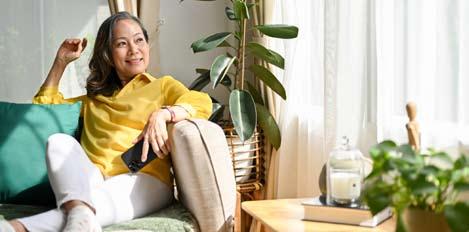
“Statistics show that retirement community residents live healthier and longer lives than those living alone.” That doesn’t sound like rocket science; we need people. A resident commented, “If I knew how many of my friends lived here, I would have moved in years ago.” As one resident says, “I have to admit, it was lonely sometimes at home, now there is always something enjoyable to do.” Whether you want to participate in all of the social activities and outings or
read a good book in the quiet of your apartment, the choice is yours.
“I love telling stories and reminiscing but it’s not always easy when they’re thirty years younger than me,” remarks a resident.
A retirement community, by its very nature, allows people to interact with people their own age affording greater empathy and identification. Memories and recollections are complimented when two people can truly share the depth and breathe of events.
Somewhat tongue-in-cheek yet true, is the adage that retirement communities provide a “constant reservoir of friends.” “I never have to worry about home upkeep or shoveling again,” said a smiling resident. Now you can choose what you would like to spend time doing: cooking in your apartment, patio gardening, traveling, learning to paint or play the piano; all of the things you never felt you had time to do before. The choice is yours.
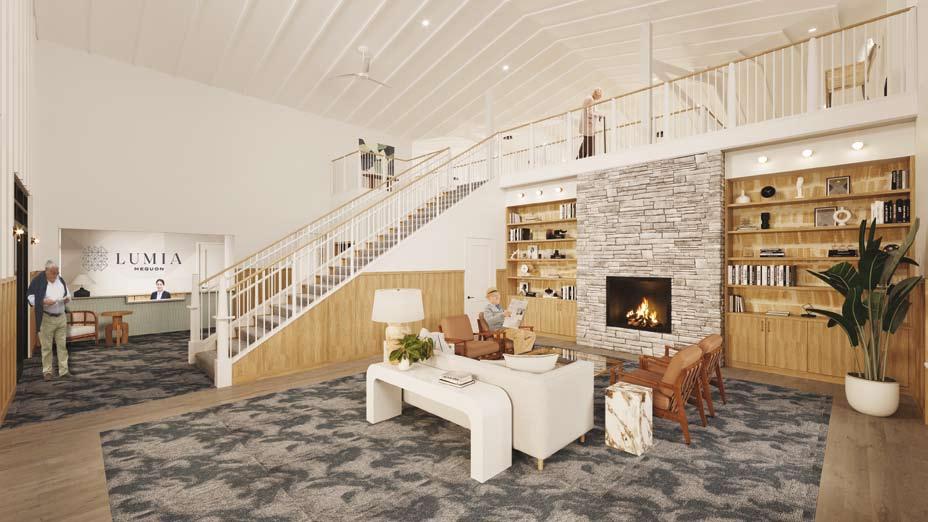
Keeping the mind, body and spirit healthy is the goal of many retirement communities. “When I moved here, it was very impressive to see how many care about my wellbeing,” a resident reported. Your choice of personal wellness goals are supported by a retirement community’s team who are all rooting for you. “Wellness programs” are growing initiatives in retirement communities to ensure balance, increased strength and awareness of changes.
Many retirement communities provide a spiritual component through pastoral visits or Sunday services that keep your hope and faith strong through all times of life.
Retirement communities offer various forms of financial protections like “life care” or “endowments” that protect your financial future regardless of your health. A “life care” type contract also provides the potential for tax deductions for prepaid medical expenses. If you don’t feel the need for long term health care coverage, many communities offer rental programs, so again the choice is yours as to which option works best for you.
“When my wife had her stroke, it was so convenient to visit her several times a day. I couldn’t do that if I had to drive each way,” commented a resident. Should a care need arise, retirement communities can provide professional and caring services, all in the comfort of your “community.”
The choice is yours regarding your lifestyle and many elements need to be considered in making your decision. Should you decide that a retirement community is right for you, there are many elements, such as the ones listed here, that need to be considered and weighed, so that you can feel confident about your choice.
BE AMONG THE FIRST! JOIN THE LUMINARY CIRCLE. NORTH SHORE’S NEWEST ASSISTED LIVING & MEMORY CARE WELCOME CENTER NOW OPEN! CALL SAMANTHA TO SCHEDULE A VISIT 262�261�7099 OpeningSpring2023 May 2023 MHL 2�
Independent, Senior Communities

Alta Mira II offers one & two bedroom apartment homes for those 55 & older. Alta Mira II is a non-smoking community that was constructed with special features for those who may be deaf or hard of hearing. Alta Mira II offers an array of amenities and social activities for its residents. Income restrictions apply.
Bell Tower Place is a non-smoking community offering elegant one & two bedroom apartment homes. Located in a quiet, residential neighborhood you are still situated in close proximity to all the modern conveniences you will need to live an independent, maintenance-free lifestyle.
Cedar Glen offers spacious one & two bedroom apartment homes centrally located in Wauwatosa, just 10 minutes from all of your shopping & dining needs. A variety of activities, 24-hour emergency maintenance and on-site management allow for the independent lifestyle you deserve! Income restrictions apply.
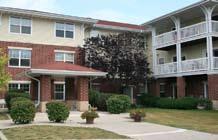
Granville Heights offers one & two bedroom apartment homes in a non-smoking community. Centrally located, you will have easy access to churches, grocery stores, restaurants and more while enjoying a relaxed, maintenance-free lifestyle within the community. Income restrictions may apply.

High grove offers luxury one adn two bedroom independent senior apartments located on the Woodland Ridge Campus. Our spacious apartmetns incldue a patior

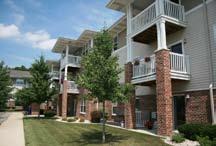
Our non-smoking community is the perfect place to call home.
Hill Crest, located on the Woodland Ridge Campus offers centrally located one adn two bedroom apartment homes fo rthe independent senior. In close proximity to all of your shopping, dining and entertainment needs, our social activities will have your social calendar full year-round. Income restrictions may apply.
Located on the Woodland Ridge Campus adjacent to the Towering Woods Nature Conservancy, Crestview offers one & two bedroom apartment homes in a non-smokin, pet-friemdly (restrictions apply) community. Enjoy an indepdendent lifestyle with 24-hr. emergency maintenance available. Income restrictions may apply.
tour at any of our Horizon managed properties www.horizonseniorhousing.com



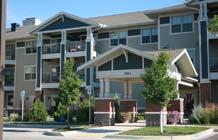
Alta Mira II Menomonee Falls - 55+ 262-719-3884 Cedar Glen Wawautosa - 55+ 262-719-3884 Bell Tower Place Franklin - 55+ 414-254-8410 Granville Heights Milwaukee - 55+ 414-357-6740
Live your best life! Call for a tour today!
High Grove 414-541-3333 We invite to take a
Hill
Crest
Crest* 414-541-3333
View* 414-541-3333
Retirement Planning
Help Your Parents Plan Their “Someday
 By Bob Trotter
By Bob Trotter
Since your parents have done a lot for you over your lifetime, this is the perfect time of year to return the favor by helping them find their “Someday” at www.socialsecurity.gov/myaccount.
In May, we honored mothers on Mother’s Day and, in June, we thanked our fathers on Father’s Day. In July, we get to show our appreciation for both. Parents’ Day, celebrated on July 27, is a great time to make sure your parents take the necessary steps to have a bright and comfortable “Someday” in retirement.
Even if they’re still young, it’s never too early to help your parents start planning for their retirement or help them imagine what their “Someday” might look like. When you ask them about their retirement plans, encourage each of them
to open their own secure my Social Security accounts at www.socialsecurity. gov/myaccount. It’s quick, easy, and free to do! They can even do it from the comfort of home.
My Social Security features several tools available to guide your parents through the retirement process, whether they’re just starting to think about it or they’re already retired. Before retiring, your parents can view their Social Security Statement to verify the accuracy of their earnings records and find out what benefits they can expect to receive at age 62, full retirement age, and at age 70. They can also get personalized benefit estimates using the Retirement Estimator at www.socialsecurity.gov/estimator. The Estimator shows different scenarios, like how future wage changes or alternate retirement dates will affect their future benefits.
Once your parents have retired and are receiving Social Security benefits, they can use their accounts to:
• check benefit information;
• get an instant letter with proof of their benefits;
• change their address and phone number;
• get a replacement SSA-1099;
• get a replacement Medicare card; and
• start or change their direct deposit or electronic payment method.
When to apply
Timing your first benefit payment
You can time your first benefit payment to avoid a gap in income. Your first check won’t arrive until the month after the one you pick in your application. You can apply any time up to four months before the month you pick.
For example, you want your first check in April. Follow this timing:
Apply in November, December, January, February, or March
Pick March in the application
Get the first check in April
Getting the maximum amount because of a current or former spouse’s work
If you’re eligible because of a spouse’s work, the amount is at its highest at your “Full Retirement Age” (between 66 and 67). It doesn’t increase if you wait and apply after that time. If your spouse has passed away, you may be eligible for Survivor benefits starting at age 60, or at age 50 if you are disabled. Retirement is a big life change, so let your parents know you’ll be there for them just as they’ve been there for you! When you help them sign up for my Social Security at www.socialsecurity/myaccount, you’re showing that their “Someday” means something to you.
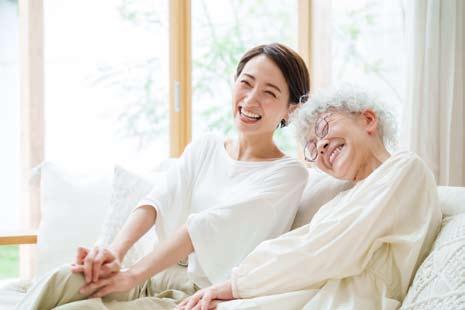
LIVE THE HARWOOD LIFESTYLE — ENJOY RETIREMENT

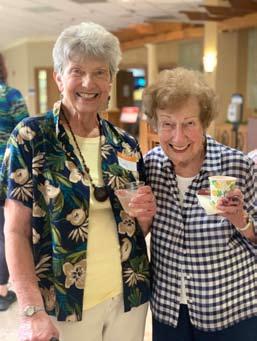
Reduced entrance fees on select models! Ask about FREE DINING for a year! 8220 Harwood Avenue, Wauwatosa | harwoodplace.org | 414-256-6814
May 2023 MHL 2�
Where A New Chapter Begins


When you or a loved decide to downsize and move into an assisted living community or independent living apartment , it’s not just about safety or healthcare; it’s also about finding your new home. A place where you feel happy and comfortable!

The transition into a retirement community is a major life decision. That’s why it is best to visit several different senior living communities. Look for quality, safety, and most importantly – a great reputation. Read the community’s online reviews.


Though it’s tempting to choose a community that’s closest to your current home or possibly the most affordable option, don’t settle if you think there may be better options that can meet your current and future healthcare needs.

After you’ve decided what communities you’ll be visiting, here are a few tips to keep in mind during your tour:
1) Ask questions. Don’t be afraid to ask a lot of questions, even if they seem unnecessary in the moment. Tour guides should be willing and happy to answer all questions that may arise. Ask what kind of meal plans are available and if the kitchen takes special requests for dietary requirements. Inquire when visitors are allowed and if overnight accommodations can be provided for them. Learn about the community’s social activities and whether transportation is provided to offcampus appointments and events.
2) Find reviews or feedback from residents. During your tour, make sure to talk to residents and ask how they feel about living in the community. Or, look for reviews of the community on the internet to see what others are saying.
3) Enjoy a meal. The food should taste great! Quality of food is important to your overall health and happiness; so if possible, join the residents for a meal. Find out if you can order items other than what is being offered, and if the kitchen takes note of special dietary restrictions or food allergies.
4) Observe the state of the building and grounds. Note how well-maintained the parking lots, walkways and landscaping are as you’re walking into the building. There should also be some outdoor areas for residents to gather and enjoy the fresh air. Once inside, pay attention to how clean the hallways and communal areas are. The senior community should smell fresh and be as dust-free as possible. Again, the best way to get an accurate “feel” for the community is to visit on an off-day; not during an open house.
5) Meet the staff and residents. While on your tour, talk with staff members as well as the residents. Take note of their attitudes; are they friendly, courteous, and seem happy to be there? Do the residents look like they are engaged and energized? The happiness of current residents can speak volumes about the community.
6) Go with your gut. If it seems difficult to make a final decision, remember to trust your instincts. Did it seem like you would be happier at one place over the other? Did you like the décor better, or were the staff slightly more welcoming at a certain community? In the end, it’s important to go with where you feel you’ll be most comfortable in the years to come..
Tudor Oaks Senior Living Community S77 W12929 McShane Drive, Muskego, WI 53150 414-529-0100 www.TudorOaks.net Tudor Oaks Senior Living Community is owned and operated by American Baptist Homes of the Midwest, a not-for-profit provider of senior housing and healthcare since 1930. Call 414-529-0100 for a tour or visit www.TudorOaks.net for a fly-thru video tour of our community. Tudor Oaks : We’re Always Here For You! ■ Assisted Living : Style-smart, charming private apartments ■ Memory Care: Personal suite with private bathroom ■ Rehab Stays Customized therapy plans, private rooms, TV, phone & Wifi included. ■ Wellness Programs ■ Beautiful Campus Setting Senior Living 30 MHL May 2023
What should I do with all these photos?!
Acommon question we get is, what to do with photos? Photographs can hold lots of memories and often pile up with plans to organize printed or digital photos at another time. At Smart Moves, we recommend starting with the quick sort. This involves quickly, without a lot of reflection, looking through your photos and sorting into 3 piles.
Pile 1 - Frame: Photos you love so much you will frame and hang them on the wall. Then do it as soon as possible.
Pile 2 - Discard: Photos that have unidentified people, are blurry, scenic pictures that aren’t the same as in real life, photos with heads cut off, duplicates, etc. These can all be discarded immediately.
Pile 3 - Review: This is the pile for photos that don’t fit in either pile 1 or 2 and need some more time for review.
You may be thinking, great, pile 3 is very large and I’m still overwhelmed. At this point we have a few suggestions. You can:
- divide pictures into categories so they are easier to organize into photo books
- invite friends and family over to share stories and take their favorite pictures with them
- send old pictures in birthday cards for those in the photo to enjoy
- digitize photos so they take up less room
- If you are still feeling like it is too much bring in an expert. Our resources page will take you to Pixologie. They can help organize entire photo estates in a way that will preserve and honor the memories you want to share with future generations.
5 Downsizing Tips

Set a Timer - if organizing and downsizing is not your favorite thing, overdoing it will not inspire you to keep going. 15 minutes is a good amount of time to focus on downsizing each day.
Take a step back - choose a room to start in and stand in the doorway. Which area will feel best to tackle. Start there so you can feel a sense of accomplishment when that area is sorted and organized. Take a before and after picture for further motivation.
Start with the easy stuff - if it is hard for you to make decisions about a certain category, start with something easier. A medicine cabinet or the silverware drawer are typically easier places to start. .
Ask yourself three questions: “Do I like it?” If the answer is no why keep it? “Do I use it?” If you’re not sure when the last time you used something, write the date on it and after 3 months if you haven’t used it reassess if it is really something you need. Lastly, “Do I have room for it?” If there isn’t room for it or it is going to end up stored away out of sight it time to explore other options.
Accept help. If it is overwhelming you to do this yourself set up a challenge with a friend - 15 minutes of downsizing for 30 days, and hold each other accountable. If you’d like a professional to help call Smart Moves 414-526-5242.


Downsizing May 2023 MHL 31
Diet And Exercise Tips For Preventing Osteoporosis
Learn how to strengthen your bones with these seven tips.Bones are the foundation of a human body, quite literally connecting us from head to toe. They’re a core component of strength, support, and mobility. Healthy bones are dense and can protect us from breaks and fractures, improve our posture, and keep us feeling strong. But sometimes our bones can become porous and weaken, causing osteoporosis. Marked by a loss of bone, inadequate production of bone, or both, osteoporosis affects approximately one in two women and one in two men over age 50. This National Osteoporosis Awareness Month, we’re highlighting seven easy ways to boost bone strength through diet and exercise, including:
Strengthening your bones relies on a holistic combination of healthy lifestyle choices. Continue reading below to learn more about these tips on how to strengthen your bones. As with any new diet or fitness program, be sure to check with your doctor to find the right approach for you.
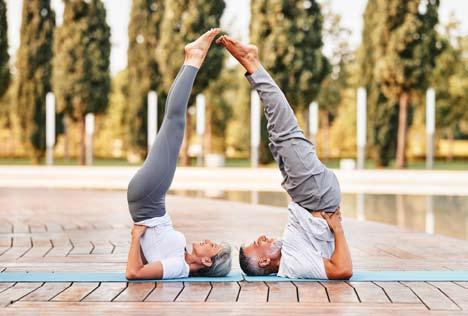
1. Eat as many vegetables as possible
All vegetables are good for you in one way or another, but when it comes to bone health, leafy greens reign supreme. Embrace those healthy salads, because spinach, kale, lettuce, and other dark leafy greens are chock-full of the vitamins, minerals, and proteins that bones love. Brussels sprouts and sweet potatoes are nourishing, bonehealthy choices as well, and there are many delicious ways to prepare them!
2. Incorporate strength training into your exercise routine
Cardio is good for your heart health, but it’s not the only kind of exercise that matters. Resistance training and weight-bearing activities are associated with improved bone density. Hitting the strength machines and picking up free weights will help grow your muscles – andyour bones. You don’t have lift hundreds of pounds to see benefits, either. Ask a trainer to help you develop a routine that’s best for you, then start where you’re comfortable. If you’re doing at-home workouts, make it fun by turning on your favorite TV show or music while you work out.
3. Get enough calcium and vitamin D
While calcium may be known to protect bones from osteoporosis, it’s not the only way to boost your bone strength. In fact, research shows that both calcium and vitamin D together can play a role. While calcium may be better known for its boneboosting effects, it’s the team approach with vitamin D that can help you absorb it for the maximum impact. Check this chartto see how much calcium and vitamin D you should consume and consult with your doctor about the right amounts for you.
4. Consume enough protein (without overdoing it)
When it comes to protein, balance is key. Protein aids in calcium absorption, so if you’re not getting enough, it could affect your bone mass. Protein from vegetable sources seems to be particularly beneficial, so think high-protein veggies like peas, spinach, and Brussels sprouts, plus beans and nuts. However, too much protein may come with risks of its own. Excess animal protein carries the bulk of these risks, though fish is typically regarded as a safer source.
5. Maintain a healthy and stable weight
When it comes to your weight, aim to be right in the middle. Being underweight is a risk factor for increased bone loss, while obesity puts more stress on bones and increases fracture risk. Talk to your doctor about the ideal weight for you and do your best to reach and maintain a mid-range weight to help you maintain your bone strength.

32 MHL May 2023
Bone Health
Social Isolation And Hearing Loss


As we gradually lose our hearing, our brain will “re-wire” itself to make maximum use of the sound it is provided by our ears.
By Dr. Douglas Kloss
Do you or someone you love avoid social situations due to hearing loss? Many people choose not to engage in social activities because they are embarrassed by their hearing loss. Some folks who cannot understand what others are saying, especially in situations with significant background noise, would rather avoid those situations than have to ask others to repeat themselves. This starts the process of social isolation and can contribute to loneliness and depression.
Hearing loss is one of the most common disabilities as we get older. The loss of hearing due to age is called presbycusis. This type of hearing loss generally occurs gradually, and many people feel they hear “just fine,” when in fact, they have a significant loss of hearing sensitivity that affects their social interactions and quality of life. One sign of hearing loss is when people say that they “hear someone talking but they cannot understand what is being said.” This type of
comment is typical of someone who is losing their high frequency hearing due to aging process. When we lose hearing due to age, it is common for high frequencies to be affected first. Since many consonants in the English language are high frequency sounds, the inability of someone to hear these particular sounds interferes with speech understanding. Low frequency sounds are where vowels are located in our language and the power from our speech is low frequency power. Oftentimes, speaking louder to someone with a hearing loss won’t make things more understandable because the low frequency vowels just get louder and mask the high frequency consonants.
What can you do?
This first step is to identify the problem. Get your hearing evaluated by an audiologist. Audiologists are trained to identify and manage hearing loss. Management of hearing loss may include referral to an ear, nose and throat physician, commonly known as an otolaryngologist. Once any medical issues are resolved, hearing aid amplification may be an option.
Hearing aid amplification is an excellent option for someone with hearing loss due to age.
As we gradually lose our hearing, our brain will “re-wire” itself to make maximum use of the sound it is provided by our ears. We actually hear with our brains, our ears are just the way the sound gets in. Over time, it is difficult for some to notice or admit that they are not hearing well anymore. Once hearing aids are fit, the brain will need to “re-wire” itself again to adjust to the sounds that have been missing for quite some time. This process can take up to six months. Most folks will notice significant improvement within the first 30 days.
Sometimes people are not comfortable with the cosmetic appearance of hearing aid amplification. That has changed with the invention of “open-fit” or “thintube” fittings. Cosmetic problems are easily overcome today. There are two styles of hearing aids that are nearly invisible when worn.
Today’s hearing aids are sophisticated electronic devices. The overwhelming majority of hearing aids dispensed today are digital hearing aids that allow for significant adjustment to meet the user’s sound quality concerns. Digital hearing aids are a huge advantage compared to analog hearing aids of the past. Today’s hearing aids can have different settings for different environments, can be completely automatic, can have remote controls that allow for user adjustments and

May is National Hearing Month Hearing >>page 40 May 2023 MHL 33
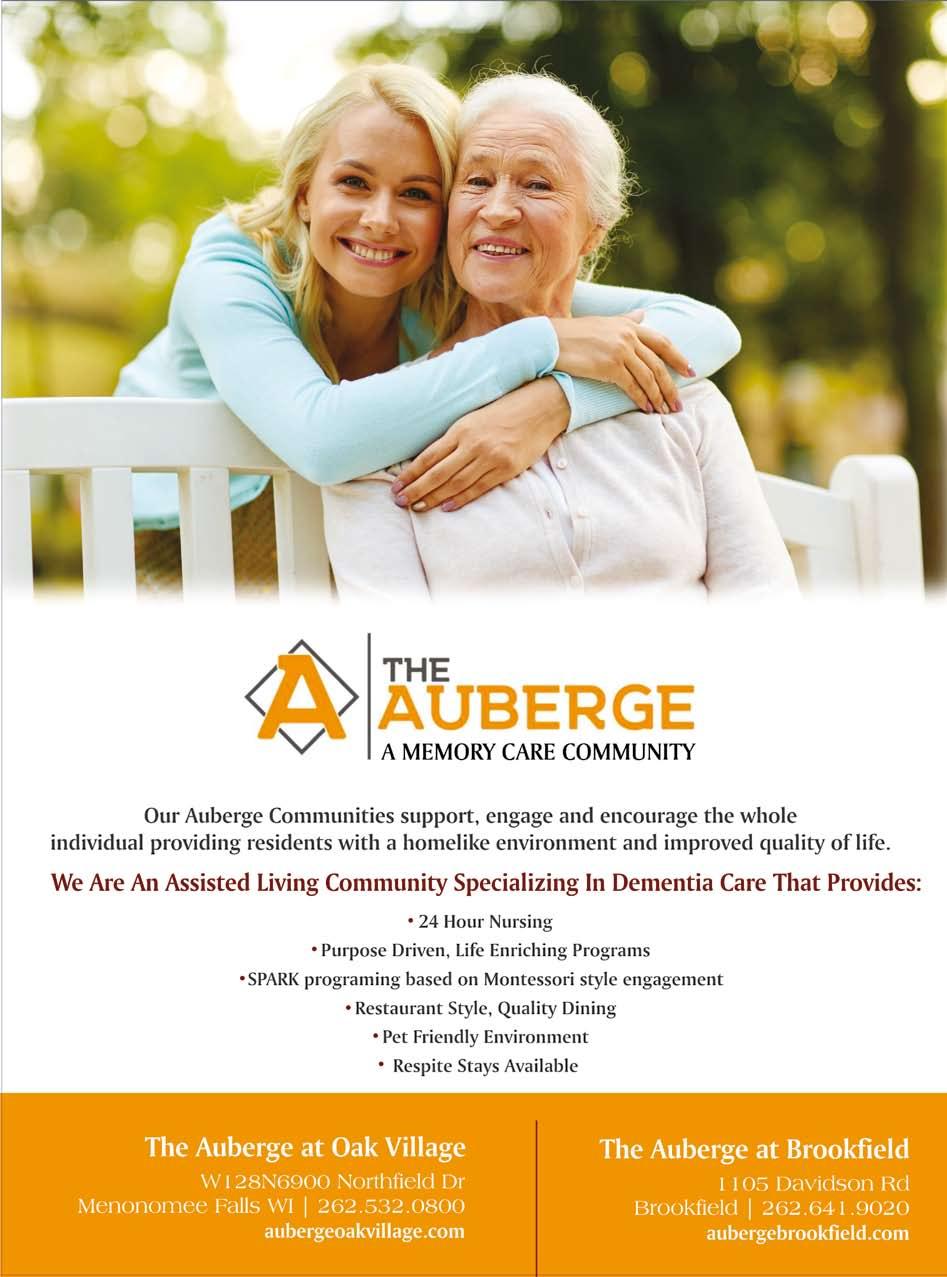
Technology and Seniors
More and more seniors are becoming familiar with communication technology, especially over the last year and a half as they have lived through isolation caused by the pandemic. But while COVID has certainly accelerated older adults’ interest in tech, this trend was already on the rise. In 2000, only 14% of people over 65 were internet users, and over the last 20 years, that number has risen to 73%. Technology gives seniors, families, caregivers and medical professionals quicker access to more information than ever before.
Seniors have become more dependent on technology to communicate with loved ones through video calls and social media, and they are much more avid technology users as a result. According to a study conducted by the AARP, more than half of people surveyed over the age of 50 own a tablet. However, technol-
ogy is affecting seniors in more ways than access to social media and television shows. With the entire world now at our fingertips, advancements in technology are helping to keep seniors safer and happier than ever.
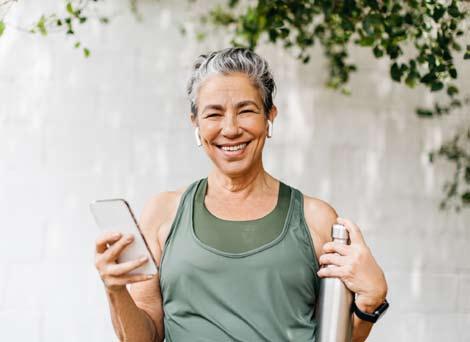
Wearable Technology for Elders



In 2018, a product hit the market that drastically changed the senior care industry: the Apple Watch Series 4. While numerous wearable devices already tracked health metrics like heart rate, the fourth generation of the popular Apple Watch launched new features, including fall detection. When the device detects that the user has experienced a hard fall, it can give them the option to call emergency services directly from their wrist. If the watch detects that the user is immobile, or unable to grant permission to make the call, it will begin to buzz and alert for 30 seconds. When that time is up, the watch will call emergency services, then notify the user’s emergency contacts of the detected fall.
This feature alone has allowed families to breathe a sigh of relief for their elderly loved ones living independently at home. In addition to fall detection, the Apple Watch includes features such as blood oxygen monitoring, heart tracking and the capability to perform an electrocardiogram. The information gathered from these features can easily be shared with doctors or other medical professionals to help provide accurate diagnoses and treatments.
Several other companies have made strides in the world of wearable technology for older adults. The Freedom 2.0 created by Medical Guardian was designed with features specifically for seniors in mind. The watch includes advanced location tracking, as well as automated alerts to help seniors manage their day-to-day tasks including taking their medication, appointment reminders, caregiver messaging capabilities and more.
Technology in Senior Communities



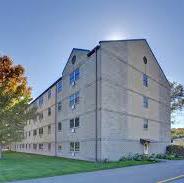
Senior living communities also employ technology to help keep their residents safe. CERTUS Premier Memory Care Living in Orlando, Fla. has motion sensors in every room to monitor its residents’ safety. Often, seniors living with Alzheimer’s disease or other forms of dementia are unable to remember that they need ambulation assistance devices, such as a wheelchair or walker. The motion sensors in each room give peace of mind to caregivers, families and seniors because the moment a senior is in need of ambulatory support, the staff is notified. This technology allows caregivers to prevent serious injury before it happens.

Technology >>page 41 May 2023 MHL 3�
Seniors have become more dependent on technology to communicate.
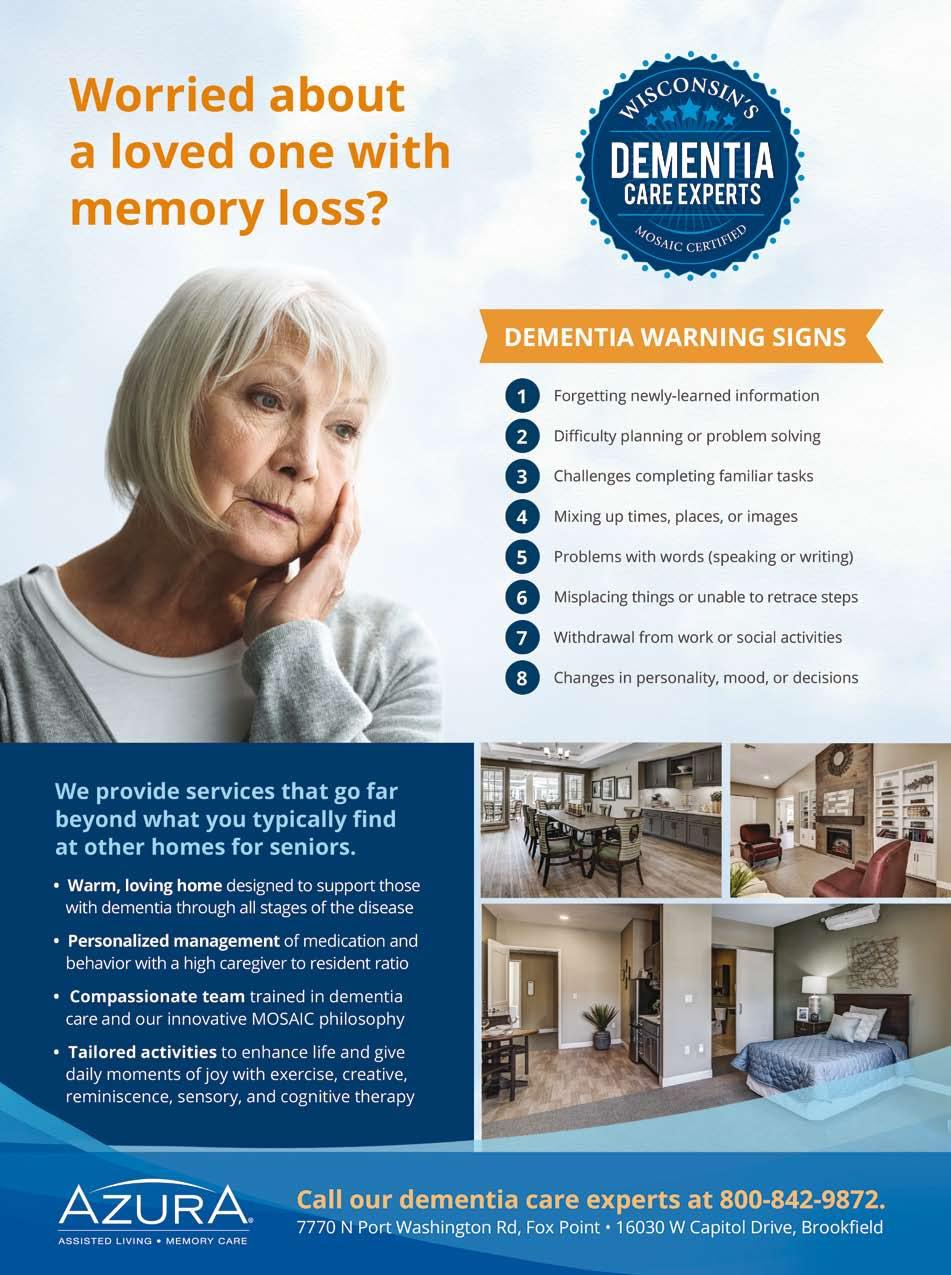
January 2023
Tai Chi: A Healthy Habit
Every Tuesday and Friday, a group of dedicated residents of Eastcastle Place senior living community meets to enhance their strength, flexibility, and focus. They achieve this by practicing tai chi, an ancient Chinese discipline providing mental and physical benefits such as enhanced strength, flexibility, and focus.
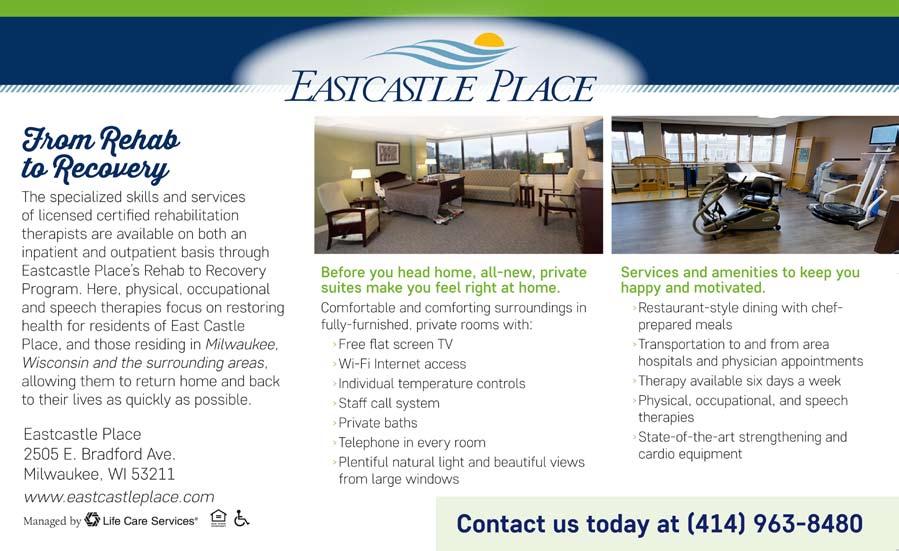
We all know how beneficial regular exercise and movement are, especially for seniors. Tai chi is a safe, yet powerful choice because, unlike many other exercise programs, tai chi involves slow, deliberate movements. In Chinese, tai chi refers to ‘supreme ultimate’ representing the principles of yin and yang. The practice combines stillness and motion. According to a report from the National Center for Complementary and Integrative Health and the National Institutes of Health, tai chi can work wonders for seniors.
The report defines tai chi as “a centuries-old practice that involves certain postures and gentle movements with mental focus, breathing, and relaxation. The movements can be adapted or practiced while walking, standing, or sitting. Tai
chi movements, if practiced quickly, can be a form of combat or self-defense.”
Tai chi can help seniors manage certain chronic conditions. “Clinical studies have shown that practicing tai chi may help improve balance and stability in older people and those with Parkinson’s disease, reduce back pain and pain from knee osteoarthritis, and improve quality of life in people with heart disease, cancer, and other chronic illnesses. In addition, tai chi may ease fibromyalgia pain and promote general quality of life. Tai chi may also improve older people’s reasoning ability,” the report continues.
Falling is one of the biggest dangers to seniors. If there was proof that tai chi helps prevent falls, would you believe it? Well, clear your schedule and come to class, because it’s true. According to this article in Healthline, regular practice of tai chi can significantly reduce the risk of falls among older adults. A 2017 review published in the Journal of the American Geriatric Society found that tai chi reduced falls by up to 50 percent. The fear of falling often causes seniors to limit their activities; the confidence and security that tai chi provides help reduce the fear of falling. In many cases, this new sense of confidence leads seniors to pursue more activities and enhance their quality of life.
Does tai chi improve the quality of life of older adults?

A 2020 review of 13 studies (869 participants) found that tai chi had a small positive effect on the quality of life and depressive symptoms of older adults with chronic conditions who lived in community settings. No significant effect was seen for mobility and physical endurance. The tai chi interventions involved 40- to 90-minute sessions done one to four times per week for 10 to 24 weeks. The authors said the studies had many differences among them, that the evidence was of low quality, and that larger high-quality studies are needed.
Tai chi may be beneficial in improving balance and preventing falls in older adults and people with Parkinson’s disease. It is unknown whether tai chi can help reduce falls in people who have had a stroke or people with osteoarthritis or heart failure.
Tai chi is a practice that involves a series of slow gentle movements and physical postures, a meditative state of mind, and controlled breathing. Tai chi originated as an ancient martial art in China. Over the years, it has become more focused on health promotion and rehabilitation.
Rehabilitation Medicine professionals at the NIH Clinical Center collaborate in and support biomedical research. They initiate research in rehabilitation sciences by providing innovative rehabilitation services and developing, investigating and applying measurements and treatments of impairments, disabilities and handicaps pertaining to human function.

Balance May 2023 MHL 3�
Dig Into The Benefits Of Gardening

Gardening may simply seem like a leisurely activity that allows you to enjoy fresh summer salads but there are actually many health benefits to planting and maintaining a garden. From the physical exercise it entails to the relaxation of tending to your plants and the healthy diet it promotes, there are plenty of reasons that it’s beneficial for you to spend some time in a garden this summer:
The physical benefits
Remember the last time you spent an afternoon in the garden and woke up the next morning with sore legs? While you may have taken it as an indicator that you could use a little more exercise, your legs were probably actually sore because you gave them a workout! From bending to reaching, gardening causes you to stretch your body in many ways that you wouldn’t normally move it. According to Health, since gardening is a form of low-impact exercise, it’s espe-
cially beneficial for seniors or people with chronic pain.

It’s also a good way to get your blood pumping if you don’t already have a regular ongoing fitness routine. Since gardening has more of a purpose than just giving you a reason to exercise, it’s possible you’ll find more enjoyment out of it and stick with it. Getting ample exercise not only keeps your body limber, but it also reduces your risk for cardiovascular health problems like heart attack and stroke.
The repetitive small movements you make in the garden, whether you’re trimming leaves or pulling weeds, are also good for people with limited dexterity in their hands. These muscle movements keep your hands strong and agile. If you find that you have difficulty performing the movements needed to garden, consider ergonomic gardening tools.
Gardening will keep you supplied with produce all summer.Gardening will keep you supplied with produce all summer.
The mental benefits
The physical benefits aren’t the only important advantages of gardening. In order to be wholly healthy, you need to take your mental well-being into account as well. Gardening has been proven to effectively relieve stress. According to the National Gardening Association, a British study found that people between the ages of 50 and 88 who gardened reported less stress than seniors who had similar social support, but didn’t have a gardening hobby. This may be due to the “contribution of engagement with nature and psychological restoration.”
Caring for a garden has also been shown help alleviate depression symptoms. A 2013 report from Gardener’s World made up of interviews and polls found that people who spent time in a garden were more likely to report being happy with their lives. Even if it can’t be proven that other factors in these people’s lives impacted their level of satisfaction, it is safe to assume that people who garden are at least enjoying themselves while they do it.
“There’s no need to run to the store for ingredients for your salad.”
The nutritional benefits
Whether you’re growing tomatoes, cucumbers or a patch of pumpkins, gardening gives you the excuse to supplement your diet with plenty of nutritious vegetables. It’s not necessary to run to the grocery store to get ingredients for your salad when you can just walk to the backyard to get what you need. Since you nurse those veggies from seeds to maturity, you can control the amount of
38 MHL May 2023
Gardening
pesticides and other extra “stuff” that’s used on them.
Another benefit of working in a garden is the vitamin D exposure from the sun that comes with it. This vitamin helps the body absorb calcium, promoting bone and immune system health. Vitamin D deficiencies are incredibly common, especially since we take such precaution to protect ourselves from the sun in order to prevent skin cancer. Our bodies need a little bit of sun, though, so that time spent in the garden will give you a healthy dose of sunlight – just don’t stay out too long!
If your home is not suited for gardening, there may be a community garden in your area. Or, consider creating an indoor herb garden. These simple potted plants provide a pleasant aroma and can add a little fresh spice to your meals.

Increased exercise
A busy day in the garden can be a good form of exercise. While tending a garden, you perform functional movement that mimics whole body exercise. You perform squats and lunges while weeding. Carrying bags of mulch and other supplies works large muscle groups. Digging, raking and using a push mower can be physically intense activities.
You may burn as many calories as a workout in the gym. If you aren’t used to these types of activities, it is likely that you will feel a bit sore after a busy day gardening. Gardening also can improve your balance, strength and flexibility.

Gardening activities can be modified if movement is a challenge. There are different ways to participate if you think outside of the box. Use a small stool or raised garden beds if you suffer from back pain. A shovel or rake can be used to support your knees when squatting. Smaller pots are lighter and easier to move than large ones. Buy smaller bags of mulch or soil that are easier to carry. Time in nature
Getting outdoors is good for your physical and mental health. People tend to breathe deeper when outside. This helps to clear out the lungs, improves digestion, improves immune response and increases oxygen levels in the blood.
Spending time outdoors has been shown to reduce heart rate and muscle tension. Sunlight lowers blood pressure and increases vitamin D levels.
Hearing <<page 33
pletely automatic, can have remote controls that allow for user adjustments and can be connected via Bluetooth technology to televisions and telephones. Some hearing aids also have rechargeable batteries and actually communicate with each other to provide the best sound to the user in varying listening environments.
One of the most important factors in determining hearing aid success is matching the correct set of hearing aids with an individual’s hearing loss and lifestyle. Digital hearing aids that are the wrong style or technology for a particular hearing loss will still perform poorly. It is vital that your level of hearing aid technology and lifestyle match your hearing loss to get the maximum benefit. Audiologists are the most highly trained individuals to perform these services.
Yes, hearing loss can lead to social isolation. But, there are remedies for hearing loss that work well and can bring your social interactions back to life. Do not let your hearing loss affect your quality of life anymore!
Dr. Douglas Kloss is an audiologist with over 30 years of experience. He has locations in the Milwaukee and Madison area.
Midwest Audiology Center, LLC, 4818 S. 76th St., Suite 3, Greenfield, WI 53220. www.midwestaudiology.net 414-281-8300

Wisconsin Hearing Aids, Inc. 1310 Mendota St., Suite 113, Madison, WI 53714. www.wisconsinhearingaids.com 608-244-1221
Dr. Kloss offers a free hearing aid consultation for all patients. By appointment only.
Wellness>>page 10
fall back into old patterns.
Gratify Your Spirit
Your fitness goals are not just about losing weight or getting in shape! They are about becoming a healthier, happier person. A holistic program will help you lift your spirits so you can become the best possible version of yourself.
Be Present Through the Process
When you are fully present, you are able to make more sound decisions by putting purposeful intent into all that you do, all while taking inventory of the good things in your life. A whole-body approach that is somewhat close to your current lifestyle makes it easy to:
Stay present through the whole process
Make the most of your time, energy, and resources
Wellness>>page 45

May 2023 MHL 3�
SPRING INTO BETTER HEALTH
Join us for a FREE 55+ community health fair!
Wednesday, May 10th | 8:30am - 12:00pm
VMP Healthcare & Community Living


8621 W. Beloit Road, West Allis
Street parking available on Beloit
There will be FREE health screenings, vendors, presentations, and community partners covering all aspects of health and well-being.
Blood Pressure Check
Hearing Test
Presentation: 9:15am - Senior Scams by Mike Scasny 10:45am - Stay Steady on Your Feet by Aurora Health Care

To register or for more information visit www Aurora org/events
Keyword: Spring or call (414) 328-7788
Vitamin D
Affects More Than Bones
Many conditions other than osteoporosis are affected by vitamin D status which have been labeled as “age related” conditions and include falling, overactive bladder, swallowing difficulties, worsening lung function, macular degeneration and cognitive decline.

Falling: The risk of falling is increased by orthopedic disabilities, visual impairment, central or peripheral neurological problems and muscle weakness, which may be the main risk factor. In randomized trials it was shown that vitamin D reduced the risk of falling by 22%.
Overactive Bladder: Bladder problems which are frequently related to poor coordination of the muscles used to control urination may also be associated with muscle weakness. Overactive bladder affects 30-40% of adults older than 75 years of age and is defined as urinary urgency with or without incontinence, usually with frequency, even during the night. In a study of nearly 6,000 community-dwelling women aged 40 years or older, women with the highest levels of vitamin D intake had the lowest risk of developing overactive bladder.
Difficulty Swallowing: Up to 40% of individuals older than 60 years have problems swallowing, which can lead to malnutrition, or aspiration pneumonia. Difficulty swallowing associated with aging was usually seen with diseases such as Parkinson’s or stroke, but more recent work has shown that even normal healthy adults swallow more slowly and generate lower tongue pressures than do younger adults. No current research has been published on vitamin D status and risk of swallowing difficulty.
Pulmonary Function: Both the forced expiratory volume fter taking a deep breath and forced vital capacity are known to decline with aging. In a study of people in the National Health and Nutrition Examination Survey III who were aged 60 years or older, measures of lung function were significantly higher among people with the highest level of vitamin D.
Age-related Macular Degeneration: In a yet-to-be published study involving 7,752 people who participated in a federally funded survey, the risk of developing age-related macular degeneration declined when an individual had higher levels of vitamin D.
Dementia/cognitive Decline: In a small study, deficient and extremely low levels of vitamin D were found in women with Alzheimer’s disease when compared to women of the same age without Alzheimer’s. Information on the study that was presented at a conference showed that higher scores on the Mini-Mental examination in 32 patients in a memory clinic were significantly and positively related to higher vitamin D concentrations.
Who Is At Risk? People who live in Wisconsin and spend most of their time indoors.
People with a previous low-impact fracture related to osteoporosis should be tested for Vitamin D. Note: Seniors who vacation in south and spend a lot of time on the golf course are probably NOT at risk
A simple blood test can measure the amount of Vitamin D in the blood. Individuals should fast for at least 4 hours before the test. Low levels indicate a defi-
40 MHL May 2023
Healthy Aging
ciency in vitamin D which could be the result of inadequate exposure to sunlight, low levels of vitamin D in the diet, inadequate adsorption or other conditions that your physician can identify. Vitamin D deficiency may lead to low blood calcium levels which in turn can lead to thin or weak bones (osteoporosis).
Why do I need vitamin D and how do I get it?
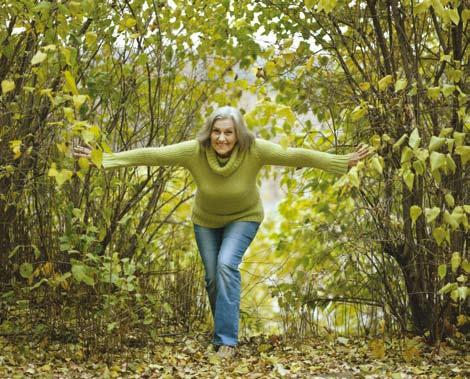
Vitamin D helps your body absorb calcium. Calcium is one of the main building blocks of bone. Vitamin D also has a role in your nervous, muscle, and immune systems.
You can get vitamin D in three ways: through your skin, from your diet, and from supplements. Your body forms vitamin D naturally after exposure to sunlight. But too much sun exposure can lead to skin aging and skin cancer, so many people try to get their vitamin D from other sources.
How much vitamin D do I need?
The amount of vitamin D you need each day depends on your age. The recommended amounts, in international units (IU), are:
Birth to 12 months: 400 IU
Children 1-13 years: 600 IU


Teens 14-18 years: 600 IU
Adults 1�-�0 years: 600 IU
Adults �1 years and older: 800 IU

Pregnant and breastfeeding women: 600 IU
How can I get more vitamin D?
There are a few foods that naturally have some vitamin D:
Fatty fish such as salmon, tuna, and mackerel
Beef liver

Cheese
Mushrooms
Egg yolks
You can also get vitamin D from fortified foods. You can check the food labels to find out whether a food has vitamin D. Foods that often have added vitamin D include:
Milk

Breakfast cereals
Orange juice
Other dairy products, such as yogurt
Soy drinks
Vitamin D is in many multivitamins. There are also vitamin D supplements, both in pills and in a liquid for babies.
Mark Your Calendar!
If you have vitamin D deficiency, the treatment is with supplements. Check with your provider about how much you need to take, how often you need to take it, and how long you need to take it.
Can too much vitamin D be harmful?
Getting too much vitamin D (known as vitamin D toxicity) can be harmful. Signs of toxicity include nausea and vomiting, poor appetite, constipation, weakness, and weight loss.
Very high levels of vitamin D can damage the kidneys. It also raises the level of calcium in your blood. High levels of blood calcium (hypercalcemia) can cause confusion, kidney failure, and irregular heartbeat (arrhythmia).
Come to Milwaukee Catholic Home for our annual “Spring into Wellness” Health Fair on Thursday, March 16th from 10 am - 3 pm at 2462 N. Prospect Avenue. The event includes free health screenings such as blood pressure checks, diabetes testing, cholesterol pre-screenings, and eye exams, as well as massages, reiki, door and raffle prizes, goodie bags, and more! Contact Linda Cardinale at 414.220.3216 or lcardinale@milwaukeecatholichome.org to learn more.
Most cases of vitamin D toxicity happen when someone overuses vitamin D supplements. You cannot get too much vitamin D from sun exposure because the skin limits the amount of vitamin D it makes.

Technology >>page 35
Caregivers often assist seniors who have trouble communicating their needs, including those who are nonverbal. Seniors who are incontinent and utilize absorbent products, such as adult diapers, may be unable to communicate when they need assistance. One large national residential care provider has partnered with a startup company to create a product that notifies caregivers the moment that an adult brief is wet or soiled. This technology helps fulfill an important need beyond the physical: the emotional need of feeling as dignified, happy and as comfortable as possible.

Much of today’s technology in senior care is streamlining the most important, relevant and time-sensitive information to the necessary medical professionals and caregivers to ensure that seniors’ needs can be met quickly and efficiently. When a senior is living independently, living with a memory-related illness or experiencing difficulty communicating with their care team, technology is the universal language that can close these gaps and keep us more in touch with seniors’ needs than ever before.
With so much technology available on the market, it can be hard to determine exactly what you or your loved one needs. To learn more about the technology available, and the technology utilized in your local senior living communities, contact your local Oasis Senior Advisor by calling (262) 287-9096.

See what’s new at St. Anne’s. St. Anne’s Salvatorian Campus 3800 N. 92nd Street, Milwaukee 53222 www.stannessc.org Take a tour of our innovative enhanced assisted living facilities or visit our renovated chapel. Call 414-463-7570. Caring for people since 1876. 140 years old and still turning heads.
“SPRING INTO
SENIOR<<page 30 May 2023 MHL 41
WELLNESS” HEALTH FAIR
Exercises That Are Good For Your Heart
The human heart is the hardest working organ in the body. Beating on average 72 times a minute, your heart pushes blood throughout your entire body delivering vital oxygen and nutrients to your bodily tissue. And like any other muscle in your body, the more you work your heart, the stronger it will be. Any sort of movement can have cardiovascular benefits – even taking a relaxing 30-minute walk.
These 7 Exercises Are Especially Effective For Improving Cardiovascular Health:
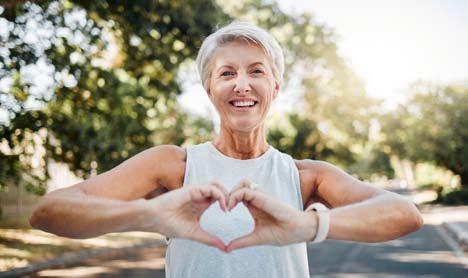
1.) Running
We all know that running is an excellent way to shed extra pounds, but it’s also great for your heart. Running intervals are a way to challenge your cardiovascular fitness. You want to work hard enough to spike heart rate levels and take minimal rest between intervals – 10-second spikes of intervals is a good place to start.
2.) Weight Training
Resistance exercises increase your heart rate during reps and recover between sets. This also produces a different pattern of blood vessel responses than other types of exercise. When weight training, your muscles will ease the burden on your heart, giving your heart a little “break.” Healthy individuals should strength train two to three times a week to reduce their risk of chronic disease, lower blood pressure, improve blood circulation to limbs, and improve overall health.
3.) Swimming
This is a wonderful option for those who experience joint pain in other forms of exercise. Swimming is lowimpact with multi-directional resistance. Swimming laps will not only ease joint paint, but it will also raise your heart rate while improving your muscular strength and tone.
4.) Playing Tennis
Want a healthy heart? Play tennis! Because of its aerobic style, tennis has many cardiovascular benefits. In addition, tennis meets and maintains the maximum heart rate criteria (60% to 90%) that is ideal for aerobic conditioning.
Tennis will also improve the following:

•Speed
•Strength
•Flexibility
•Balance
•Coordination
•Muscle tone & strength
�.) High Intensity/Interval
Training
The cardiovascular impact of highintensity exercise versus light exercise has always been a subject for debate. However, findings show that high-intensity workouts win. Why are highintensity workouts better for your heart? There are a few reasons – your heart rate is higher, your blood vessels are more dilated, and you burn more calories (and continue to burn more calories while at rest).
When it comes to heart health and exercise, short and intense are more effective than long and less intense.
6.) Yoga
The practice of Yoga is one of the best stress relievers there is. A calm mind, body, and spirit means a healthier heart! More active styles of yoga, such as Ashtanga and Bikram, offer even more cardiovascular benefits. Since they are a little more intense, these styles will elevate your heart rate more than traditional yoga.
�.) Cycling
Cycling is a great exercise option for those who do not prefer running or high-impact training.
Studies have shown cycling 19 miles a week reduces the potential for heart disease by 50%. Cycling also increases your capacity to burn body fat to lose weight.
42 MHL May 2023
Fitness
Simple Stretching Exercises
These stretching exercises can be done standing or seated.Stretching exercises are an excellent way to keep your body more mobile, flexible, and pain-free as you age. The benefits of stretching include increased range of motion, better performance during physical activity, improved posture and circulation, healing and protection from joint and muscle injury, and even mental health benefits like stress relief.

Regular stretching can improve our health in many ways, but it’s only part of a regular exercise routine. It’s a good idea to check in with your doctor first to make sure you’re cleared to try stretching, especially if you have a history of pain or injury.
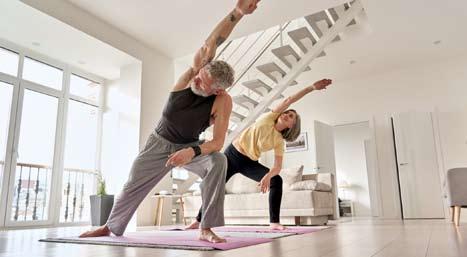
If your doctor gives you the green light, here’s a collection of uncomplicated stretching exercises you can start incorporating into your routine!
Unless specified as standing, most of these stretching exercises can also be done while sitting on a chair or the floor. Try to do each stretch for 20-30 seconds at a time, but stop if anything becomes painful.
Overhead stretch
Overhead stretching feels so natural that you might even do it automatically when you wake up! Just sit or stand and stretch your arms toward the ceiling with your fingers interlaced. This stretches your shoulders, chest, biceps, and triceps.
Cross-body shoulder stretch
Stretching your shoulders helps keep these essential joints mobile. One of the most popular shoulder stretches involves simply grasping one of your arms with the opposite hand on the bicep area and pulling it across your body. You’ll feel a stretch in your shoulders and upper back.
Side stretch
The side stretch is similar to the overhead stretch in that you start with your arms over your head with your fingers clasped. This stretching exercise adds in a side-to-side lean and is best done from a seated position. Leaning to one side, holding, then leaning to the other side helps stretch your abdominal muscles.
Arm & ankle circles
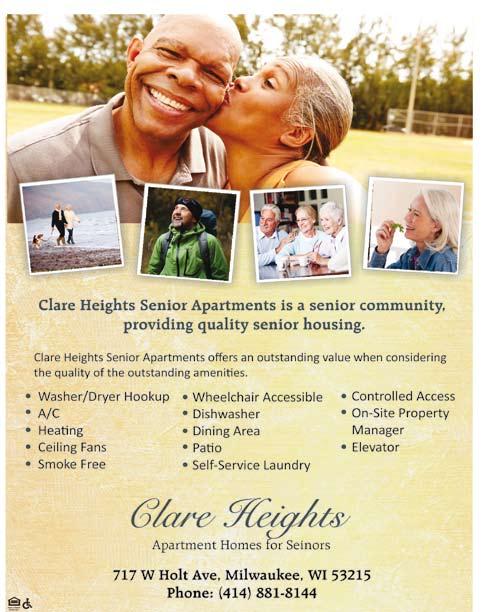
Simply rotating parts of your body in circles can be a fantastic simple stretching exercise! Reach your arms out to your sides and move them in circles, starting with a narrow circle and growing wider as you go. For ankle circles, sit in a chair and lift one foot off the ground at a time, circling your ankle in one direction and then the other before switching to the other foot.
Wall calf stretch
To stretch out your calves, find your nearest wall. Step towards it with one foot, bending that knee, and put your palms flat on the wall. Stretch out the other leg straight behind you, trying to keep the heel of that leg on the floor as you stretch each calf.
Standing lunge
Lunges can double as an exercise and a stretch! They work your hamstrings, quads, calves, glutes, and even abs. To do a lunge, take a big step forward with one foot and lower yourself until your knee is at a right angle. The other leg will naturally dip down behind you, so your toes are touching the floor. Hold each lunge, then step forward to do it with the other leg. You can modify this stretch depending on your ability and any knee pain you might have.
Standing quad stretch
You can use a wall or a chair to balance for this one! Stand up straight with your feet close behind you and lift one leg behind you, grabbing the top of your foot with the same-side hand. Bring your foot towards your glutes until your knee is pointing toward the floor. You’ll feel the stretch in the front of your leg.
May 2023 MHL 43
Fitness
An excellent way to keep your body more mobile, flexible, and pain-free as you age.
How to Improve Your Upper Body Posture
As we spend more time using technology, it is crucial to check in with our upper body posture. Hours a day peering at screens and tapping keyboards causes a shift in how we use the inner deep muscles supporting our bodies. Over time, the consequence of unconscious changes to how we hold our body can include forward head posture, rounded shoulders and altered patterns of breathing.
May is Posture Month, and it’s the perfect time to become more aware of how the world sees you. In addition to enhancing your appearance, improving your posture can help reduce neck pain and upper body stress, boosting your energy level and overall well-being.
According to posture expert Dr. Steven Weiniger, “Posture awareness is about getting in touch with your brain’s perception of where your body is in space, and is part of our interoceptive senses.
Research show interoception is vital to health and pain management because that’s how we sense changes to our inner body, including muscle strain and joint stress, as well as our perception of heartbeat, hunger and even balance.”
Strengthening interoception is a crucial first step towards improving

Recipes<<page 19
your posture, and StrongPosture® Wall Lean is a simple exercise to improve your upper body posture awareness and breathing.
Try the StrongPosture Wall Lean:
•Stand one foot-length away from a wall


•Reach back and rest your buttocks on the wall. Keep your feet straight and knees locked.
•Lean back and bring your shoulders to the wall. Keep your chest open and palms facing forward.
•Keep your head level, and eyes looking straight ahead.
Improving interoception is about paying attention to one thing at a time. So, take five slow breaths, focusing on a different area of your body with each breath.



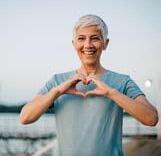
Now let’s focus while you breathe:
•1st Breath: Keep your head level and press it towards the wall as you exhale.
•2nd Breath: Keep your head level and press your shoulders down as you exhale.

•3rd Breath: Check that your feet and knees are straight, and your head is still level.
•4th Breath: Make sure your shoulders are still pressed down and press your head towards the wall.
•5th Breath: Lift your head a little higher as you exhale, imagining a balloon lifting it up.

Spray large skillet with Pam, heat skillet, add olive oil. Add scallions, ginger and garlic to hot skillet,cook 3 minutes. Add chicken cook till brown, about 5 minutes.
Add pinapple, with juice and black bean sauce, let come to a boil, turn heat low and let simmer for 30 mins, or until chicken is cooked. Divide rice into 4 bowls, a half cup each.
Spoon mixture over rice.
garnish with green onions.
Health Insurance Life Insurance Annuities LongTerm Care Insurance Auto Homeowners Immediate SR22 Filings Free Quotes 7421 W. Becher St. West Allis, WI We are not limited to representing one company, so we can give you unbiased advice. 414-545-7878 1-800-924-4061 www.AlliedSeniorServices.com Be Confident in Your Coverage. Convenient Downtown Location Free Parking- secure Entr y System Beauty Salon-Community Room Social Activities QUALITY SUBSIDIZED SENIOR HOUSING Senior Living At Its Finest! 801 Nor th East Ave Waukesha, WI 53186 EAST TERRACE APARTMENTS of Waukesha 262-544-9757 or 800-944-4866 ext. 1122 44 MHL May 2023
May is Posture Month
strength-building. This is one way to help avoid a plateau, yes, but even smaller changes will yield results.
One example is changing from a bilateral movement — a barbell back squat, for example — to a unilateral movement — a Bulgarian split squat — which can challenge your body enough to improve strength, Harmon says.
Or, Harmon says switching up the type of equipment you’re using — barbell, dumbbell, gym machine — is another small change you can make to your workout routine to see improvements.

If your goal is body composition-oriented (building lean muscle, for example), Harmon recommends adding repetitions week to week without decreasing the weight. If your goal is strength-oriented, try adding a little more weight while decreasing the number of repetitions.
What Happens When You Don’t Change Your Workout Routine
They say variety is the spice of life. That’s also true for your workout routine.
“At the end of the day, your body just wants to adapt so it can handle stressors,” Harmon explains. “When there are new stressors, your body can adapt and rise to those challenges.”
If we do the same exercise over and over again we can get really good at it, but it’s no longer a challenge, and we won’t see an increase in adaptation or improved performance.
Dr. Ilan agrees and gives the example of basketball great LeBron James.
“LeBron James practices and practices and gets better, but then he hits a plateau because of the connections between his brain, his muscles and his nerves,” Dr. Ilan explains. “Practicing will help maintain his plateau, but his body has developed a tolerance.”
In other words, not only does changing up your workout routine challenge your muscles to work harder and differently, it’s challenging your mind and creating new neural pathways.
“If you introduce surprise in a workout, you can overcome the plateau in your brain,” Dr. Ilan says. “We’re designed to adapt to changes, our brain adjusts and then we need to cheat the brain.”
Variety also keeps you from getting stuck in a workout rut, Harmon says.
“I’m a big believer in liking what we’re doing,” she says.

There’s research to back up the idea that keeping your workout, er, spicy, can keep you more motivated, too. A December 2019 study published in PLOS One found that a small group of male subjects showed comparable gains in strength, but those who had more variety in the workouts had more motivation to work out.
In order to help people avoid training plateaus, Dr. Ilan, with his company, Oberon Sciences, developed an application that changes a user’s workout, whether that be running pace or distance, to continuously challenge the body (and the mind).
Dr. Ilan gives this example: A user can connect their app to a treadmill, and the program will select a speed from a predefined range, say, 3 to 5 miles per hour. Throughout the workout, the program will change the pace every minute.
“You can break that training plateau,” he says, noting that as you use the program regularly, the algorithm will learn how you work out and will adapt accordingly.
The Bottom Line


In order to avoid a training plateau, it’s crucial to change some part of your workout every few weeks. It doesn’t have to be a monumental change; even something small can keep your brain and your body challenged.
This article origanally appeared on livestrong.com.
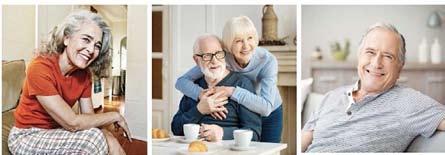

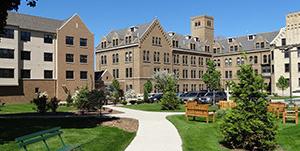
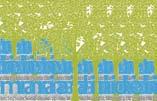
Wellness<<page 39

Recognize your successes every step of the way Stay True to Yourself

Although a fitness consultant might have some tips on how to transform your lifestyle, a holistic program helps you do so while staying true to yourself! Since they specifically tailor the program to your needs, you can be sure that you are making the right changes for your body and life so you can become a better version of you.

Becoming a healthier, stronger version of yourself is possible with the right whole-body wellness program. If you are looking to make sustainable changes to your life in Salt Lake City, UT or the surrounding area, Total Health and Fitness is the way to go! You’ll have so much fun, you’ll forget fitness ever felt like a struggle.
For more information visit www.totalhealthandfitness.com.
May 2023 MHL 4 �
Change<<page 17
Alleviate Back Pain with Home Remedies
By Erica Roth
Back spasms are painful contractions or cramps in the muscles of the back. The pain can be the result of overdoing it during an athletic workout or as simple as just moving wrong while getting out of bed or performing a household chore. According to the Sports Injury Bulletin, most back spasms affect the lower area of the back. You can alleviate the pain of a muscle cramp in the back through home remedies.
Step 1
Ice the area that hurts to relieve the pain of a back spasm. Apply an ice pack in a massaging motion to your back—you may need the help of a family member to reach the right spot—for a period of 12 minutes, according to Sports Injury Bulletin. The cold not only eases the pain but can reduce inflammation within the muscle and surrounding tissues. You can ice the painful area throughout the day, taking a 20-minute break between icing sessions.
Step 2









Take an over-the-counter pain reliever such as ibuprofen or acetaminophen to

treat a back spasm at home. Most spasms that occur without ligament tearing can be helped by medications you probably already have in your medicine cabinet.
Step 3



Do some gentle stretching to strengthen your lower back, which can both relieve and prevent muscle cramps, according to MedlinePlus. Pelvic tilts, also called pelvic presses, strengthen the lower part of your back and increases your flexibility.
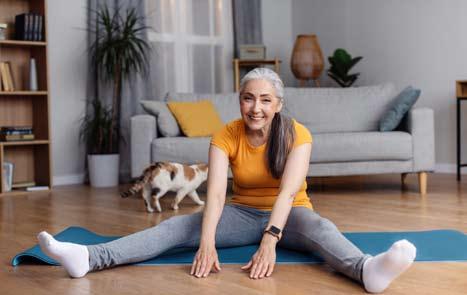
Lie down on the floor or a bed with your arms straight down beside you. Tighten your stomach muscles, gently pushing the small of your back down against the floor. Hold the position for several seconds—up to 12 seconds is ideal if you can—before relaxing.

Step 4
Perform leg lifts to strengthen your back and core and to help loosen up tight muscles that spasm often. Lie on the floor or a bed. Lift your right arm and left leg up as high as you can, keeping both limbs straight. Hold the position as long as you can before returning to your original position. Repeat the exercise with your left arm and right leg. Two sets of 10 repetitions of this exercise is adequate, according to the Sports Injury Bulletin.
Things You’ll Need


Ice packs

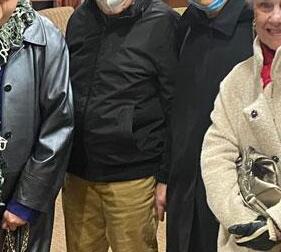
Pain relievers
Tips
Though stretching can help back spasms, wait until your pain has subsided from its worst before starting the stretches.
Research shows that yoga and stretching can ease pain and improve back movement. Scientists divided 228 people who’d had moderate pain for at least 3 months into three groups. Two groups took a 75-minute yoga or stretching class once a week for 12 weeks. The third group got a book of exercises and lifestyle changes they could make to ease their discomfort.
After 3 months, those who did yoga or intensive stretching fared better than those who didn’t. A full 6 months later, they took less medicine for their back pain. They also said their pain was better or completely gone during follow-up appointments.
Yoga, Pilates, and tai chi are just a few of the ways to strengthen your core and the muscles around your hips. One exercise that targets your entire upper and lower back is to lie on your tummy and lift up your legs and arms in the flying position.
While exercise is one of the best things you can do to relieve back pain, it shouldn’t hurt or make your pain worse. If so, check in with your doctor or physical therapist to make sure you’re doing the right exercise for you.
46 MHL May 2023
262-478-1500 TEROVASENIORLIVING COM ORLIVING
262-478-1500 TEROVASENIORLIVING COM ORLIVING
using this system is to develop self-awareness by stepping back and color-coding your mental state three times a day: morning, lunchtime, and evening. This will help you recognize patterns, pinpoint when you’re in the red or blue zones, and make adjustments. The next steps, once you have identified your patterns, are to:
Adjust Your Schedule. Plan your day with your mental state patterns in mind. Doing so can help you minimize exposure to stressors and triggers, keeping you in the green zone more often.
Identify Destabilizing Factors. Keep track of activities or situations that push you out of the green zone. Knowing these triggers allows you to reduce exposure and stay balanced.
Explore Balancing Activities. Figure out what activities help you return to the green zone. Whether it’s spending time with loved ones, practicing yoga, or going for a nature walk, make these activities part of your daily routine to maintain mental balance.
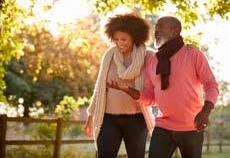
By tuning into your nervous system with the Neurobalance approach, you’ll become more self-aware, which will empower you to proactively manage your mental well-being. As you spend more time in the green zone, you’ll perform better thanks to clearer thinking. You’ll experience stronger connections, less burnout and, above all, far more joy.
Katerina Lengold is a former space tech entrepreneur turned brain researcher and mental health advocate. By the age of 23, Katerina sold her space tech startup, ImageAiry, and had become the youngest executive in the world aerospace industry. After severe burnout, she turned her interest from launching satellites to studying the human brain. A graduate of MIT, Katerina started college at age 14 and holds multiple degrees, including in computer science, business administration, economics and data science. She also received a certificate in interpersonal Neurobiology from the Mindsight Institute.
Vision<<page 9

• Applying icepacks or cold compresses may reduce itching and puffiness.












• Using antihistamine eyedrops may provide fast, effective relief once allergies initiate themselves. Mild antihistamine eyedrops can be purchased without a prescription and, depending on the directions, may be able to be used up to four times a day. Some of the more common brands are Vasocon-A or Naphcon. More potent medicines are available by prescription. But don’t overuse these products, or your eyes could develop a dependency and turn even redder when you stop using the medications. This is called rebound redness.
• Recent advances have also been made with eyedrops that block allergy activators from being released. These drops can be used to prevent the development of symptoms in people with seasonal allergies and are usually safe for long-term use.

• Other prescription eyedrops can also be effective. Cortisone-like medicines called steroids can help reduce allergic symptoms. New eyedrops made from aspirin-like compounds can also provide excellent relief. To prevent side effects, you should only use these medicines under a doctor’s supervision. if eye allergies are hampering your activities and interests, make an appointment with an eye care specialist. He or she will be happy to evaluate your condition and prescribe the fastest way to get you outside enjoying activities with clear eyes. If you don’t have a specialist or are in need of a second opinion, the doctors quoted in this article have offices in downtown Milwaukee, West Allis, and the Mayfair mall area. They can be reached at 414-321-7520 or by visiting www.eyecarespecialists.net.
Ddclutter<<page 13


























through the items, taking home the things that mean something to them. Of course, even if a senior has said an item is up for grabs, the person should still double check before taking it.
• General Clutter
◦ Offer to help your senior sort through their closet. Designate one bin for storage and one for donations and one for trash, make sure that every item either goes in one of the bins or has an easily accessible spot where it belongs in your senior’s home.
◦ Every season, do an update of the closet and the storage bin. If the senior hasn’t needed the item in storage or won’t in the upcoming season, maybe it’s time to relegate it to donations or trash.


For more information about decluttering, visit caregiverstress.com. For more information about the care and well-being of seniors, please contact us at 414882-5464.



Oak Park Place offers Assisted Living and Memory Care with all the features you expect in a place to call home. Individualized services, life-enhancing amenities, and compassionate, professional staff are the foundation of all we do.
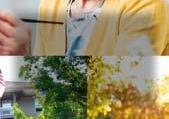

Choose from a range of spacious studio and one-bedroom apartments with assistance available from staff 24 hours a day, every day.
Independence when you want it, assistance when you need it. Oak Park Place.

We’ll help you every step of the way.

1621 Rivers Bend, Wauwatosa, WI 53226 www.OakParkPlace.com/Wauwatosa
how will you spend it?
414-292-0400 or email wauwatosasales@oakparkplace.com. May 2023 MHL 4�
PARK 9501 W. Loomis Rd. | Franklin WI 53132 Heat and hot water is included in your r ent, along with many fun and unique acti vities, On-site management of fice and 24/7 maintenance. Call Us To Schedule A Tour ASAP! 414-427-8499 Brenwood Park Senior Living
Call
BRENWOOD
Code<<page 15






























 By Cheryl L. Dejewski
By Cheryl L. Dejewski












































 By Roddy Scheer and Doug Moss
By Roddy Scheer and Doug Moss

























 By Bob Trotter
By Bob Trotter

























































































